
Published by W.D. Hoard & Sons Co. January 2023 hayandforage.com From special ops to a special farm pg 6 Baler depreciation pg 12 Adaptive management keys grazing success pg 18 Pasture quality impacts consumption pg 26
By Paul Schneider Jr., AG-USA (This is a paid advertisement)
The best way to optimize rain absorption and retention is through aeration. The best way to aerate the soil is with microbes!
In the soil, the mineral particles are the building blocks. Sugars sequestered by the plant (organic matter) are the cement that holds these particles together. If the soil is healthy, around 66% of the soil will be air gaps. These air gaps are like a carbon sponge that is capable of storing a huge amount of water.
Highly structured soil massively increases nutrient availability
Eighty percent of the availability of nutrients has to do with how much of the surface area of mineral particles is exposed. Air gaps in the soil create a LOT of surface area, making nutrients much more available to the plant.
Moreover, 80% of essential minerals and trace minerals are cations that stick to this aerated surface.
MycorrPlus does a great job of aerating the soil. It does this by:
● Helping kick carbon sequestration by the plant into high gear.
● Helping establish conditions in the soil where mycorrhizal fungi flourish.
● Bacteria, fungi and earthworms then work together to develop a carbon sponge in the soil.
Fix carbon to build topsoil; burn carbon and you deplete soil
Nature has an amazing ability to fix carbon back into the soil. In our American prairie land, grasses had fixed enough carbon to create 30 to 50 feet of deep organic soil with 8% organic matter. Most of that is now gone.
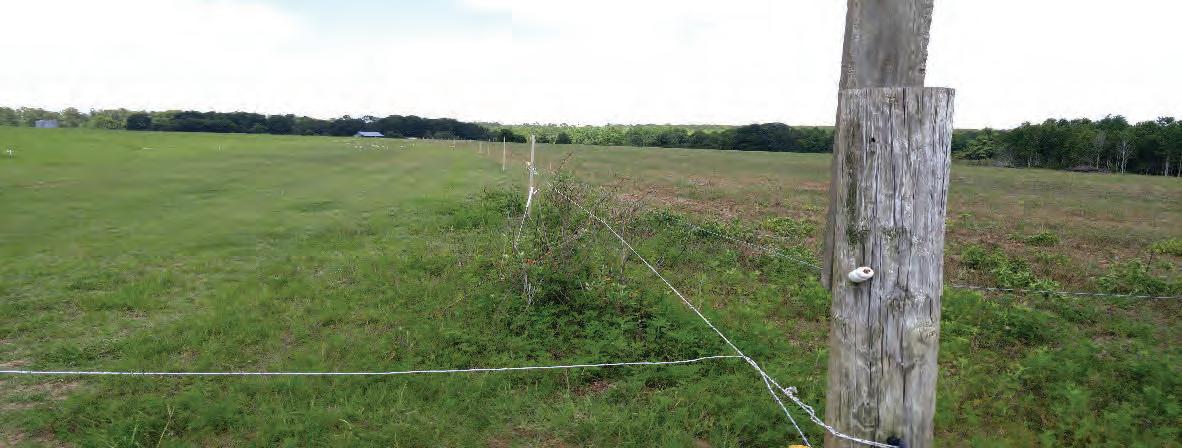
Our farms have this same ability to build organic matter by utilizing crop residues and cover crops and by maximizing carbon sequestration.
Sadly, we also have the ability to oxidize and burn off organic matter (CO2) through burning, clearing, tillage, over-fertilization, over-grazing, cutting hay too short, biocides and bare fallowing our land.
With these negative practices, mankind has turned 40% of the world’s good growing land into desert and wasteland. In many places in America we are half way through destroying our organic matter deposits.
As this happens, water doesn’t soak into the soil. This moisture is therefore not retained. When things get dry, the soil becomes dry and hard. Poor farming
practices are slowly turning our great farmlands into desert.
Carbon sequestration is the best way to fix stable carbon down into the soil. Organic matter from plants disappears within two years. The great thing about MycorrPlus is that it helps kick carbon sequestration into high gear. This steadily builds stable organic matter back into the soil.
MycorrPlus works even better when used with practices like rotational grazing, cover crops, utilizing crop residues and not cutting hay too short.
● Imagine optimizing your soil’s ability to store moisture.
● Imagine your crops staying green and growing when it turns dry.
Why not get some MycorrPlus today!
Conclusion
Rainfall can be uncertain. MycorrPlus can help you do something about it. Please call toll-free today and ask for a free information packet or contact our West Coast office!
Or go to: www.AG-USA.net

Conquer Nature by Cooperating with it
Like a center pivot for dryland farmers!
MycorrPlus is a liquid bio-stimulant that helps to remove compaction by highly structuring the soil. It creates something like an aerobic net in the soil that retains nutrients and moisture. It contains sea minerals, 70+ aerobic bacteria, 4 strains of mycorrhizal fungi, fish, kelp, humic acid and molasses. $20 to $40/acre.
Reduces the
Plus TM
need for LIME and other fertilizers
National office: AG-USA, PO Box 73019, Newnan, GA 30271. (888) 588-3139 info@ag-usa.net West Coast office: Global Restoration LLC, 1513 NW Jackpine Ave., Redmond, OR 97756. (541) 788-8918 wcoast@ag-usa.net To learn more, call (888) 588-3139 Mon.
Sat.
10
EST.
Organic?
-
from 8 a.m. to
p.m.
Request a free information packet or visit: www.AG-USA.net
Use MycorrPlus-O.
MANAGING EDITOR Michael C. Rankin
ART DIRECTOR Todd Garrett
EDITORIAL COORDINATOR Jennifer L. Yurs
ONLINE MANAGER Patti J. Hurtgen
DIRECTOR OF MARKETING John R. Mansavage
ADVERTISING SALES
Kim E. Zilverberg kzilverberg@hayandforage.com
Jenna Zilverberg jzilverberg@hayandforage.com
ADVERTISING COORDINATOR
Patti J. Kressin pkressin@hayandforage.com
W.D. HOARD & SONS
PRESIDENT Brian V. Knox
From special ops to a special farm
Ron Locke entered the Air Force to help pay for his Missouri farm. Little did he know what that decision would mean for him, his family, and his farm.
We need to be more drought resilient
It’s time to get serious about drought preparation. Here’s Part 1 on how to make it happen.
Grasses and girls grow on this Wisconsin dairy
Grass species impact every acre on this dairy operation. That includes daily greenchopping for the farm’s total mixed rations.
EDITORIAL OFFICE
28 Milwaukee Ave. West, Fort Atkinson, WI, 53538 WEBSITE www.hayandforage.com
EMAIL info@hayandforage.com PHONE 920-563-5551
DEPARTMENTS
4 First Cut
12 Forage Gearhead
14 Alfalfa Checkoff
16
20
29
34
34
16
CONTROLS WATERHEMP
25 A WET FALL IS CAUSE FOR MYCOTOXIN CONCERNS
26 PASTURE FORAGE QUALITY IMPACTS WHAT CATTLE CONSUME

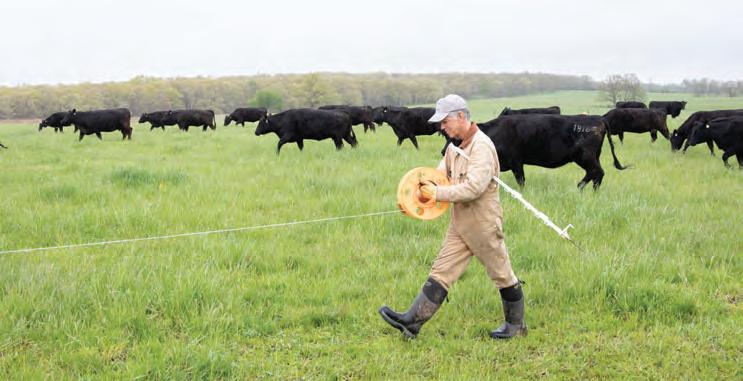
FERTILIZER OR SOIL BIOLOGY?
18 ADAPTIVE MANAGEMENT KEYS GRAZING SUCCESS 20 KEEP YOUR SOIL PUMP PRIMED
29 FAT AND FATTY ACID ANALYSIS IS EVOLVING
34 FORAGE IQ AND HAY MARKET UPDATE

Kortney Woldt is one of five daughters raised on Woldt Farms LLC near Brillion, Wis. The parents, Daryl and Amy, have grown the farm to 4,500 acres of owned and rented land and milk over 1,500 cows. Greenchopped forage grasses play a big part in their cows’ dairy ration. The family recently opened an on-farm store, which features a variety of local products. Learn more about this operation of grasses and girls beginning on Page 22.

HAY & FORAGE GROWER (ISSN 0891-5946) copyright © 2022 W. D. Hoard & Sons Company. All rights reserved. Published six times annually in January, February, March, April/May, August/September and November by W. D. Hoard & Sons Co., 28 Milwaukee Ave., W., Fort Atkinson, Wisconsin 53538 USA. Tel: 920-563-5551. Fax: 920-563-7298. Email: info@hayandforage.com. Website: www.hayandforage.com. Periodicals Postage paid at Fort Atkinson, Wis., and additional mail offices. SUBSCRIPTION RATES: Free and controlled circulation to qualified subscribers. Non-qualified subscribers may subscribe at: USA: 1 year $20 U.S.; Outside USA: Canada & Mexico, 1 year $80 U.S.; All other countries, 1 year $120 U.S. For Subscriber Services contact: Hay & Forage Grower, PO Box 801, Fort Atkinson, WI 53538 USA; call: 920-563-5551, email: info@hayandforage.com or visit: www.hayandforage.com. POSTMASTER: Send address changes to HAY & FORAGE GROWER, 28 Milwaukee Ave., W., Fort Atkinson, Wisconsin 53538 USA. Subscribers who have provided a valid email address may receive the Hay & Forage Grower email newsletter eHay Weekly. January 2023 · VOL. 38 · No. 1 6
10
22
4 LOW SOIL K IS NOT OK 12 BALER DEPRECIATION 14 ESTABLISHED ALFALFA
Photo by Mike Rankin
ON THE COVER
The Pasture Walk
Feedbunk
18 Beef
Sunrise
Soil
Dairy Feedbunk
On
25
Feed Analysis
Forage
IQ
Hay Market Update
January 2023 | hayandforage.com | 3
Mike Rankin Managing Editor
Low soil K is not OK
THERE was a day not too long ago when potash (0-0-60/62) fertilizer would cost a farmer far less than $400 per ton. In fact, for the entirety of 2019 and 2020, potash sat below that historically low price point.
The COVID-19 pandemic shut down world economies for extended periods and continues to be largely responsible for the inflation experienced in all phases of human existence. Ramping back up hasn’t been easy. Then, of course, there is also the war in Ukraine.
Through it all, we have watched the price of most farm inputs and outputs skyrocket. A year ago, many farmers had prepurchased inputs before prices got too out of hand. That wasn’t much of an option in 2022. As of this writing, the retail price of potash is still north of $800 per ton, even though potash supplies are in good shape, according to industry reports.
When will the potash price point come down? I don’t know. But I do know that alfalfa and other forage species don’t care. Without adequate soil potassium levels, forage crops will not perform to expectations. Things may still look somewhat green from the road, but yields and persistence will suffer. I’ve seen too many potassium-deficient alfalfa fields in my life to predict otherwise.
Every crop species has its own unique characteristics. As with people, you have to take the good with the bad. Unfortunately, crops such as alfalfa, orchardgrass, and corn harvested as silage are heavy removers of potassium. For example, alfalfa removes about 55 pounds of potassium (as K 2 O) per dry matter ton, and corn harvested for silage removes over 8 pounds of K 2 O per wet ton harvested. Most of this is removed in the stover.
When you break out the abacus and start doing the math for our current situation, the bottom line isn’t particularly heartwarming. If potash is biting at $830 per ton, that equates to alfalfa removing about $37 for each dry matter ton harvested, or $185 per acre for a 5-ton total-season yield. That hurts! Is there any wonder why the price of hay is where it is?
Pumping the brakes on potash applications is a reasonable response, especially if soil tests indicate already high levels. But such a strategy can’t be employed long term, as both soil potassium concentrations and yields will crash.
Although forage species such as alfalfa are heavy potassium users wherever they’re grown,
not all regions play by the same set of rules. I talked with an alfalfa grower in Idaho several years ago who put little to no potash on his fields. The parent mineral material of his soils was already rich in potassium and seemed to hold soil levels in a steady state. Lucky him. With the economic stakes so high, having a good set of soil tests to guide a potassium fertilizer strategy has never been more critical. Both over and under application will be costly in the short term.
If soil test levels are at or below the optimum level, a plant tissue test, which is vastly underutilized in our industry, is a sure-fire approach to confirm the nutrient status of the crop. While working as an extension agronomist, I used plant tissue tests frequently to discern field issues.

Plant tissue tests rarely failed to pinpoint an underlying problem or, in some cases, confirm nutrient adequacy. This old, but valuable, tool is the most reliable way to save hundreds of dollars in fertilizer expense or prevent hundreds (perhaps thousands) of dollars in lost yield.
Potassium deficiency has become a more common occurrence in forage crops. The cost of potassium won’t alleviate that situation. Given the boom in corn silage acres across many regions, potassium removal rates for crop rotations have spiked substantially. If both alfalfa and corn silage comprise the entire rotation, massive amounts of potassium are being taken off fields. Couple an alfalfa-corn silage rotation with inadequate fertilizer or manure application rates, and it doesn’t take long for soils to become potassium deficient.
The price of potash is at historically high levels, but so is the value of forage. Cutting back on potash applications might be a prudent short-term decision on some fields or farms, but that strategy won’t be sustainable in the mid- to long term. Yields of alfalfa and other perennial forage crops will deteriorate rapidly if potassium deficiency persists. That will be true with high- or lowpriced potash. Forages don’t recognize fertilizer invoices, but they easily discern when there’s not enough potassium for optimum growth. •
Hope your new year is a good one,

FIRST CUT
Write Managing Editor Mike Rankin, 28 Milwaukee Ave., P.O. Box 801, Fort Atkinson, WI 53538 call: 920-563-5551 or email: mrankin@hayandforage.com
4 | Hay & Forage Grower | January 2023









Keep alfalfa weevil larvae from taking a bite out of your pro ts. Alfalfa weevil larvae can do serious damage to a season in just three days. That’s why controlling them is so important. Steward® EC insecticide, with active ingredient indoxacarb, is study-demonstrated to help control and target alfalfa weevil larvae through ingestion as well as contact activity with low impact on parasitoid and predatory insects when used in accordance with label directions. That’s what makes it a valuable resistance management tool. Visit your FMC retailer or STEWARDEC.AG.FMC.COM to take some of the terror out of your season. Always read and follow all label directions, precautions and restrictions for use. Some products may not be registered for sale or use in all states. FMC, the FMC logo and Steward are trademarks of FMC Corporation or an affiliate. ©2022 FMC Corporation. All rights reserved. 22-FMC-2249 10/22
CONTROL THE BIGGEST THREATS.
FROM SPECIAL OPS TO A SPECIAL FARM
 by Mike Rankin
by Mike Rankin
RON Locke has been to almost every country in the world, but few people knew exactly where he was or why he was there. He won’t tell you — even if you ask. But for the past 24 years, it’s been much easier to locate the amicable and loquacious cow-calf producer. You’ll find him in the foothills of Missouri’s Ozark Mountains near the rural community of Long Lane; it’s the only so-named community you’ll find on a U.S. map. Locke’s childhood was spent just outside of Chicago in urban Hammond, Ind. When he was 8 years old, he spent two weeks of the summer visiting his aunt and uncle’s beef farm in Missouri. He never missed another summer of vacating the city for the country and
eventually stayed in Missouri for the entire summer between school years. According to Locke, “I got hooked on farming and beef cattle pretty early. I didn’t know it at the time, but I was being groomed to farm.” He still has his uncle’s 8N Ford tractor that he learned to drive as a kid.
Immediately after high school, Locke married his high school sweetheart, Judi, and within two months, packed up for their trek to a beef farming career. “We rented an apartment in Buffalo, Mo., not far from my uncle’s place, and I was going to be a farmer,” Locke recalled of his thought process at the time.
Into the wild blue yonder
The young couple got a loan from the bank and bought 40 acres next to his
uncle’s farm. Locke soon learned that a steady paycheck wasn’t part of the deal, and they needed money to live on. While visiting with a different uncle who was in the Air Force, Locke became convinced that he, too, should enlist and build some financial equity.
Locke joined with the promise that he’d be trained as a heavy equipment — think bulldozer — operator. This was a skill that would be useful when he came back to the farm. While still in basic training, he was offered the opportunity to become an explosives specialist. He accepted the offer, and out of basic training in 1973, Locke was sent to Korea for a year to blow up unused munitions that remained from the Vietnam War. As you might expect, Locke interjected, “We had a blast.”
Once back in the states, Locke was
6 | Hay & Forage Grower | January 2023
All photos Mike Rankin
Ron Locke’s portable shade proved to be a game changer for his rotational grazing system. It allowed him to use additional paddocks during Missouri’s hot summers.
trained as an Air Force combat controller. This was a group known as the “quiet professionals.” Little of what they did was public knowledge, and Locke led a life of secrecy for 26 years, providing air cover and support for units such as Delta Force and the Navy SEALs. Not even his wife and young family knew where he was, although they, too, found themselves living at various military bases throughout the world. “After retirement from the Air Force in 1998, I was ready to come back to Missouri and grow grass,” Locke reflected.
Learning grass and beef
Upon returning to the Show-Me State, Locke and his family had a recently-built house on his 40 acres, a pond that was dug before joining the Air Force, and lots of toxic tall fescue grass. His aunt and uncle also had their farm, but they were elderly by this time, in declining health and needing help, which was a major reason why Locke retired from the Air Force and came home.
In the military, a lot of time is spent training, either in the classroom or field. Unfortunately, there wasn’t a coordinated boot camp for grazing beef cows, at least at that time.
“I was always a big believer in education,” Locke noted. “I immediately hooked up with extension and the USDA. They put me on to the Show-MeSelect Replacement Heifer Program, and I bought a dozen animals at their sale to start my herd.” Eventually, he started operating his uncle’s 200 acres as well.
Early on, Locke attended a grazing school and became sold on rotational grazing. Like most beginning graziers, he admitted to making his fair share of mistakes and chuckled as he recalled the first fence he built. “I had posts every 6 feet with three strands of electric wire. It’s still out there, but now I build a fence with posts every 90 feet and one strand of polywire. One strand is all that’s needed to turn a cow if you have a good charger,” he added.
After years of trial and error, the Air Force officer turned beef producer is steadfast in his grazing philosophy. “I don’t understand why a cattle producer wouldn’t rotationally graze once the water infrastructure is in place. The only other limiting factor is time, and that’s only 10 minutes a day to move a polywire. Other than that, there are no
excuses, and the benefits are ten-fold.”
Through the years, Locke has added some unique features to his beef grazing system. He has lanes that easily allow him to move cattle and get to paddocks that are ready to graze. The water infrastructure is also such that it can be tapped from any paddock, regardless of size. Both above and below ground waterlines are used.
For years, providing shade in some of Locke’s paddocks proved to be a
in the Air Force, is now applied on his farm in the Ozarks. Locke’s holy grail book contains historical information on every field and paddock, including soil test data that is updated every three years.
To estimate and monitor forage availability across the farm, Locke uses a front-mounted sensor on his UTV, which is coupled to a software app called PaddockTrac from the University of Missouri. With the forage availability
challenge and limited his ability to move cows to certain areas during the hot Missouri summers. Trained to be a problem solver, Locke found his solution with a heavy-duty portable shade unit that he’s been utilizing for the past four years. As the cows move, so does the shade, which he can hook to his utility task vehicle (UTV), move, and set up in a matter of minutes.
These days, the Lockes’ R&J Ranch consists of 400 acres with multiple fields and paddocks. He’s had as many as 100 brood cows, but currently the herd consists of about 50 cows plus some registered Black Angus bulls that he sells for breeding. His calves are backgrounded for at least 60 days before being sold. The fall-born calves are genomic tested to determine which bulls or heifers will be kept and which ones will be sold after backgrounding.


The holy grail
Military personnel usually don’t go anywhere without their dog tags. On R&J Ranch, Locke doesn’t make a move without what he calls his “holy grail book.” The need for detail and Locke’s desire for as much information as possible, which was no doubt learned while
estimates, the app generates a grazing wedge graph to help guide cattle movements. Locke strives to keep his cool-season grass paddocks below 2,000 pounds of dry matter. “At that point, I feel I’m losing quality,” he said. All of this information is kept in his holy grail book. Locke also tracks cattle move-
continued on following page >>>
January 2023 | hayandforage.com | 7
“I don’t understand why a cattle producer wouldn’t rotationally graze once the water infrastructure is in place,” Ron Locke said. “The benefits are ten-fold.”
Locke’s cattle graze a paddock of novel endophyte tall fescue. The Show-Me State rancher has only a few remaining fields of unrenovated, toxic fescue.
ment, inventory, and performance with the CattleMax record-keeping system.

Recently, Locke began working with USDA Agricultural Research Service soil scientist Alan Franzluebbers to monitor the soil health and quality of his paddocks. Several sets of soil samples have been taken in the past few years. This information, too, resides in the holy grail book and helps guide nitrogen applications on pastures. “I find this information extremely useful and interesting, but there’s still a lot to learn in how it can be applied and interpreted,” Locke noted.
Goodbye toxic fescue
Like most mid-South farms, toxic Kentucky 31 tall fescue comprised nearly all of Locke’s initial forage inventory. That remained the case up to the point where he attended a seminar on how to renovate pastures with new novel endophyte fescue varieties. At the same program, he was shocked to learn the amount of production he was losing by grazing his toxic fescue.
Before making the financial commitment to convert his pastures to novel endophyte varieties, the meticulous Locke was determined to find out how bad his fescue really was. After all, it’s
important to know your enemy. Following detailed instructions, he collected plant crowns from numerous pastures and drove the samples to the University of Missouri in Columbia.
“My samples were hot, nearly all above 85% toxic,” Locke said. “That was the clincher, and starting in 2005, I vowed to kill and reseed a field per year to a novel endophyte variety until I got it all done. I still have a few (fields) that are not done yet, but they aren’t that productive anyway, and I just manage around them.”
Locke has perfected his renovation technique through years of terminating Kentucky 31. “I spray with glyphosate when the fescue is boot-high in May,” he explained. “In June, I seed pearl millet, graze it once or twice, spray again after some regrowth, and then broadcast seeds the novel endophyte tall fescue in early September. I don’t graze it in the fall, flash-graze once in the spring, then it’s usually in full production.”
Locke stockpiles some of his fescue each year, applying about 60 pounds of nitrogen per acre in mid-August.
Warm-season success
Novel endophyte tall fescue isn’t the only thing that currently comprises
his farm’s forage base. Any good battle planner knows you need Options B and C. After all, the toxic fescue issue is one thing, but there are still the Big D’s to contend with — dormancy and drought. That’s where warm-season grasses come into play.
Locke uses the same tall fescue establishment approach for seeding perennial warm-season pastures of bluestems and indiangrass, but he doesn’t seed until December. The seed is mixed with fertilizer, broadcasted on the field, then rolled with a cultipacker to enhance seed-to-soil contact. The native warm-season grass doesn’t germinate until the next spring. He currently has about 60 acres of perennial warm-season grasses in production.
“Plateau herbicide revolutionized establishing warm-season grasses,” Locke said. “I usually cut the warm-season grass fields for hay once in early July, before heading, and then graze them in late September or October.” He also has a field of eastern gamagrass, which was established in 2007. “I strip graze the gamagrass with a back fence, and by the time I get across the 14-acre field, the first strip is ready to graze again. That stuff really grows fast,” he exclaimed.
Another recent feature on the R&J Ranch is milo (sorghum), which Locke now plants each year on a designated 8-acre field. After heading and grain development, it’s strip-grazed and feeds 50 cow-calf pairs for nearly 60 days. It’s during this time that the fall-stockpiled fescue is growing.
Lespedeza love
Legumes are also on the ranch’s roll call. Locke frost seeds lespedeza every spring, although not every paddock is frost seeded every year. He is especially partial to Legend lespedeza, a warm-season annual and prolific seed producer. Locke has some set survey sites that he photographs each spring and fall to determine legume status and whether a particular paddock needs targeting for the next year’s lespedeza frost seeding. He explained that he rarely needs to frost seed clover, as white, ladino, and red clover seem to be ever present. “If you graze clovers right and don’t overgraze, they will always come back,” he noted.
In the spring, Locke likes to flash graze, beginning with his few remaining Kentucky 31 pastures. “I want the cows to get a bite and keep moving,” he
8 | Hay & Forage Grower | January 2023
To monitor forage availability in each paddock, Locke uses a front-mounted sensor on his UTV, which works in concert with his PaddockTrac software. The “holy grail book” is opened to a current grazing wedge graph.
said. “Hopefully, we can prevent some of those seedheads from developing, which are really toxic.”

His pride and joy
Although Locke can easily be classified as an early adopter of technology and operator of a high-end grazing system, his pride and joy remains an Allis-Chalmers Roto-Baler. “It’s worth its weight in gold,” Locke asserted. He then continued to explain why the vintage machine still holds value beyond an antique farm equipment show. “When we get rain in July, there’s usually a tremendous amount of lespedeza in August. I will bale with the Roto-Baler, leave the bales in the same field, and use these fields for bale grazing in the winter after the stockpiled fescue has accumulated around the bales. There are generally only one or two cows around a single bale, causing very little damage to the pasture. It’s amazing to watch cows grazing these fields. Some of them go right to the lespedeza bales while others much prefer the stockpiled fescue,” noted the
observant cattleman.

Locke also has a standard-sized round baler. The winter of 2022 to 2023 will be the first one that he tries bale grazing the larger bales. Because Locke artificially breeds his cows and heifers with a timed synchronization protocol, he needs some stored hay to feed when he brings his herd up to a small pasture next to his corral and working facilities. He also unrolls hay when
needed so young calves have a dry place to lie down during periods of ice or the occasional Missouri snowstorm.
Locke has a lot of life stories and experiences that he cannot expound upon with any detail. That’s just the way it is for an Air Force Special Ops Command combat controller. Ironically, the polar opposite is true regarding his experiences as a beef producer and pasture manager. Few people are willing to share more than Locke when it comes to his farm operation and decision making. Through the years, he has benefited from others’ knowledge, and he is more than willing to reciprocate. Locke has been a featured speaker at numerous grazing meetings and hosted many educational events on his farm.

The Missouri farmer attributes much of his farm success to education, training, and experience — the same things that served him well in his military career. However, Locke readily admits that there’s always more to learn and try. And when he does uncover something new, you’ll probably find it in his holy grail book. •




January 2023 | hayandforage.com | 9 Contact Mountain View Seeds at 503.588.7333 for a free MVS Forage & Cover Crop Guide www.mtviewseeds.com AN AMERICAN SEED COMPANY FARMER OWNED BETTER GENETICSFOR ALL YOUR HAY NEEDS HIGH YIELDING LATEST MATURITY DISEASE RESISTANCE HORSE QUALITY HIGH YIELDS EXCELLENT REGROWTH HIGH YIELDING INTERMEDIATE TYPE EXCELLENT PERSISTENCE PREMIUM ALFALFA SEED YIELD & QUALITY LEADER THE NEW GO-TO FD4 DRI 35/35 CERTIFIED ITALIAN TOP FORAGE QUALITY HIGH YIELDING HIGH YIELDING DISEASE RESISTANT EXCELLENT PERSISTENCE
Locke uses a variety of cool- and warm-season forage grasses and legumes to keep his cattle on pasture for as long as possible and with minimal supplementation.
WE NEED TO BE MORE DROUGHT RESILIENT |
by Eric Bailey
DROUGHT has affected wide swaths of the United States recently. For much of 2022, a large area of Missouri faced severe drought, and cattle producers are feeling the effects on their businesses.
Do we need to consider drought moving forward when making decisions about carrying capacity on farms and ranches?
This question is always top of mind for Western cattle producers in arid regions, but I am going to make a case for why those running cattle in parts of the country that receive over 35 inches of precipitation per year should also be thinking about it.
I looked back at weather data from a Columbia, Mo., weather station recently. In the last 80 years, there were 18 periods of drought (defined as less than 80% of average annual precipitation). That translates to a drought period once every 4.44 years. The last two periods of drought to spread across a wide swath of Missouri were in 2018 and 2012. For low-margin, high-capital businesses like beef production, drought poses a significant risk factor.
I project producers to pay over $3 per cow per day in feed (hay plus supplement) this winter. The 2018 drought was severe but had a silver lining. Commodity feedstuffs were cheap, and in some areas, producers were buying a ton of soybean hulls for the same price as they were a 5x6 round bale of hay. The commodity markets are much different in 2022, with most feeds double the price from four years ago.
How do we build a more drought-resilient farm or ranch? In this issue and the next, we will discuss five factors that can help make an operation more tolerant of drought.
Managed grazing systems
Managed grazing systems are a big opportunity to enhance farm profit and sustainability. We make management decisions to boost pasture forage yield, but a cow does not harvest every
pound of pasture grass. A cow grazing the same pasture 365 days a year will only consume between one fourth and one third of the forage grown. Cattle foul (urinate and defecate on), trample, and refuse to use portions of pastures in a “continuous” grazing system. The larger the area they have at one time, the more selective they will be about which parts of the pasture they want to use and which ones to ignore.
A tall fescue pasture that is not fertilized with nitrogen in the spring will produce about 4,000 pounds of forage per acre, and one that is fertilized with 60 pounds of nitrogen will produce 6,000 pounds of forage per acre, or a 50% increase. An improvement of forage utilization from 25% to 40% will elevate the amount of forage eaten by a cow per acre by nearly the same amount.
Let’s compare fertilizer versus enhancing forage utilization without fertilizer. Twenty-five percent of 6,000 pounds is 1,550 pounds, and 40% of 4,000 pounds is 1,600 pounds. With today’s fertilizer prices, does it make more sense to maximize yield or to try to improve the utilization of forage already grown?
What will it take to raise forage utilization from 25% to 40%? According to research data, going from a single pasture continuously grazed to a six-paddock rotation system will raise forage utilization to over 40%.
In continuous grazing systems, cattle graze areas near water and shade more frequently. Plants in this area get minimal recovery time. Water placement may be in a corner of the pasture and not easy to change. When that occurs, perhaps use mineral supplements or shade to lure cattle to underutilized portions of the pasture, if breaking the pasture down into smaller paddocks is not possible.
I often hear from producers who are reluctant to implement grazing systems that are too expensive or too much work. An effectively managed grazing system does not have to mean all or nothing. An effective grazing system is possible without having to make
daily moves from paddock to paddock or the need for installing a dizzying amount of temporary electric fence. The reality is that we have options on the farm already. If your farm has four to six pastures, yet you have cattle in each, consider grouping the cattle into one larger bunch and rotating them through the pastures. In doing so, you are allowing plants to rest and recover between grazing bouts.
Cost of haying versus grazing
A reasonable knee-jerk reaction to a system with less pasture forage growth is to secure more hay, whether that is from purchasing off-farm or finding additional fields to make hay. These approaches don’t make the most financial sense moving forward.
One number that could help producers make feed-planning decisions is knowing the cost of forage when grazed by a cow versus the cost of stored forages that are fed to cows. While the cost of having the cow harvest feed might seem difficult to calculate on the surface, it only requires a few numbers you already have access to.
Consider a scenario where you rent land for $65 per acre per year, and that land produces 3 tons of tall fescue per acre per year. Not all of that feed ends up in the cow’s mouth. We must apply a forage utilization rate to adjust the amount of feed that gets trampled, fouled, or otherwise refused for a beef cow. If no managed grazing system is in place, then less than one-third of that feed ends up in a cow’s mouth. Let’s assume for this example that no managed grazing system is in place and that 30% of the feed grown on a pasture will be consumed by a cow (30% of 3 tons is 1,800 pounds of feed). If it costs $65 to get 1,800 pounds of feed, then every 1,000-pound bale of this feed costs $36.11.
Can you buy 1,000 pounds of hay for $36.11? Certainly, there are years when you can, but another important question is, “Can you produce hay for $36.11 per bale next year?” I have been
PART 1
10 | Hay & Forage Grower | January 2023
a strong advocate for less haying and more grazing, despite resistance from producers. My argument against hay boils down to cost. The University of Missouri’s fescue-clover hay planning budget for 2023 estimates a yield of 6,000 pounds per acre and a cost per acre of $297.52. That works out to be $49.59 per 1,000-pound bale. Should $13.48 ($49.59 to $36.11) per 1,000 pounds of feed be a motivating factor to divest from a haymaking and feeding enterprise? I know of many 200cow operations that are putting up over 1,000 bales of hay per year and feeding it throughout the winter. Cutting that in half would save the farm nearly $7,000, or $35 per cow per winter. Remember, this math is built upon a continuous grazing system. Imagine the possibilities when you stack tools like rotational grazing systems with a commitment to graze more and feed less.
Nitrogen use efficiency
How many pounds of forage are produced for each pound of nitrogen
fertilizer applied to tall fescue pastures? Many factors play into this question, but it appears that in the next few years, nitrogen fertilizer is going to be expensive, and we must put a sharp pencil to paper and identify whether nitrogen fertilizer will be a profitable practice going forward.
Make Your Voice Heard!
nitrogen and be profitable if the forage response is reliable. If the forage response to nitrogen is only 10 pounds of additional forage, then your 1,000-pound bale costs $100. Reliability of fall precipitation becomes an unknown factor in making decisions to fertilize with nitrogen in the fall. Experts in the field assure me that most of the nitrogen not used in the fall will still be available to the plant in the spring, but often we already have more forage than we know what to do with in the spring.
In the next issue, we will discuss how big cows and stocking rates play into making your farm more drought resilient. •
The U.S. EPA is proposing to make the most significant changes to Rodenticides in 15 years:
Let’s look at an example of late summer fertilization to boost the fall growth of tall fescue pastures. The consensus from multiple state extension services is that every pound of nitrogen applied in August produces 20 pounds of additional forage dry matter. If nitrogen fertilizer costs $1 per pound, then each additional pound of forage costs 5 cents. A 1,000-pound bale of this forage would cost $50. The quality of this feed grown is outstanding and should be factored into this decision. Stockpiled tall fescue can meet the nutrient requirements of a lactating fall calving cow for much of the winter, assuming enough forage is available to keep her fed.
Cancelling products and crop uses Adding more requirements to the labels Reclassifying some products to Restricted Use Pesticides
Make Your Voice Heard!
We can absorb $1 per pound of
ERIC BAILEY
The author is an assistant professor and extension beef specialist at the University of MissouriColumbia.

The U.S. EPA is proposing to make the most significant changes to Rodenticides in 15 years:
Make Your Voice Heard!
Make Your Voice Heard!
Make Your Voice Heard!
Cancelling products and crop uses
The U.S. EPA is proposing to make the most significant changes to Rodenticides in 15 years:
Cancelling products and crop uses
Reclassifying some products to Restricted Use Pesticides
The U.S. EPA is proposing to make the most significant changes to Rodenticides in 15 years:

Adding more requirements to the labels
Reclassifying some products to Restricted Use Pesticides
Cancelling products and crop uses
Adding more requirements to the labels
Do you use rodenticides on your land? Are rodenticides essential to the viability of your agri-business? The EPA will seek public comments on its proposed mitigation measures for the registration review of rodenticides starting in November. During a 60-day public comment period, the Agency will accept comments on their proposed changes, as described in the Proposed Interim Decision (PID) documents for:
Reclassifying some products to Restricted Use Pesticides
Do you use rodenticides on your land? Are rodenticides essential to the viability of your agri-business? The EPA will seek public comments on its proposed mitigation measures for the registration review of rodenticides starting in November. During a 60-day public comment period, the Agency will accept comments on their proposed changes, as described in the Proposed Interim Decision (PID) documents for:
Acute Rodenticides (bromethalin and cholecalciferol)
Adding more requirements to the labels
TAKE ACTION
Do you use rodenticides on your land? Are rodenticides essential to the viability of your agri-business? The EPA will seek public comments on its proposed mitigation measures for the registration review of rodenticides starting in November. During a 60-day public comment period, the Agency will accept comments on their proposed changes, as described in the Proposed Interim Decision (PID) documents for:
Acute Rodenticides (bromethalin and cholecalciferol)
TAKE ACTION
Anticoagulant Rodenticides (chlorophacinone, diphacinone, warfarin, brodifacoum, bromadiolone, difenacoum, and difethialone)
Anticoagulant Rodenticides (chlorophacinone, diphacinone, warfarin, brodifacoum, bromadiolone, difenacoum, and difethialone)
Acute Rodenticides (bromethalin and cholecalciferol)
Zinc phosphide.
Zinc phosphide.
Anticoagulant Rodenticides (chlorophacinone, diphacinone, warfarin, brodifacoum, bromadiolone, difenacoum, and difethialone)
Do you use rodenticides on your land? Are rodenticides essential to the viability of your agri-business? The EPA will seek public comments on its proposed mitigation measures for the registration review of rodenticides starting in November. During a 60-day public comment period, the Agency will accept comments on their proposed changes, as described in the Proposed Interim Decision (PID) documents for:
www.responsiblerodenticides.org
Zinc phosphide.
www.responsiblerodenticides.org
www.responsiblerodenticides.org
The Rodenticide Task Force includes industry professionals, educators, and scientists with decades of experience and specialized expertise. It is committed to providing educational information about the appropriate and effective use of rodenticides as part of Integrated Pest Management programs that protect public health, food safety, and property while protecting the environment, endangered species, and other non-target animals.
TAKE ACTION
The Rodenticide Task Force includes industry professionals, educators, and scientists with decades of experience and specialized expertise. It is committed to providing educational information about the appropriate and effective use of rodenticides as part of Integrated Pest Management programs that protect public health, food safety, and property while protecting the environment, endangered species, and other non-target animals.
The Rodenticide Task Force includes industry professionals, educators, and scientists with decades experience and specialized expertise. It is committed to providing educational information about the appropriate and effective use of rodenticides as part of Integrated Pest Management programs that protect public health, food safety, and property while protecting the environment, endangered species, and other non-target animals.
(chlorophacinone, diphacinone, warfarin, brodifacoum, bromadiolone, difenacoum, and difethialone)
Do you use rodenticides on your land? Are rodenticides essential to the viability of your agri-business? The EPA will seek public comments on its proposed mitigation measures for the registration review of rodenticides starting in November. During a 60-day public comment period, the Agency will accept comments on their proposed changes, as described in the Proposed Interim Decision (PID) documents for:
Zinc phosphide.
Acute Rodenticides
www.responsiblerodenticides.org

January 2023 | hayandforage.com | 11
TAKE ACTION
(bromethalin and TAKE ACTION
The U.S. EPA is proposing to make the most significant changes to Rodenticides in 15 years:
Cancelling products and crop uses
Adding more requirements to the labels
Reclassifying some products to Restricted Use Pesticides
Baler depreciation
S THE cold weather sets in and daylight hours shorten, it usually allows for more time with our families as well as time to ponder improvements to our operations. Some could be looking to upgrade the baling tractor while others may just be looking for a new rake. Whatever the improvement may be, it often involves getting a “bigger and better” piece of equipment. It’s just our nature as farmers — we don’t want to buy every acre of ground, just every acre that touches the acres we already own!
This same philosophy can be seen in the evolution of baling hay. We’ve moved from making piles in the field with pitchforks to the Hesston StackHand and small square baler. Eventually, the large round baler and large square baler dominated the market. Each new technology offered a way to cover more acres and put up more tons in a day. This is also the case for today’s major advancements in the round baler market. We now have several manufacturers producing nonstop round balers, and we even have a self-propelled model.
Manufacturers are all pushing the limit when it comes to innovation in what most considered an old and somewhat stagnant market. Usually, it’s the tractor,

sprayer, or harvesting segments that push innovation the most, but these nonstop and self-propelled balers are proof that baling hay won’t be left in the dust.
The tonnage one of these new technology balers can push through is impressive, and they’ve had farmers talking in coffee shops throughout the U.S. What isn’t so impressive is the price tag that comes with each of these baler types. The prices on the nonstop balers and wrapper combos are estimated to be over $150,000. Since no models are currently for sale from dealers in the U.S., that price is mere speculation. The self-propelled Vermeer ZR5 comes in at around $250,000, but since it’s a modular machine, the life expectancy of the machine is pretty high.
Rising depreciation
These new balers have the potential to really change baling efficiency in the future. The first owners of these balers will no doubt have a competitive advantage, but what concerns me are the second and third owners of these machines. In the past, most round balers have two or three different owners before they are “put out to pasture” to retire. These days, the first operators
are putting more bales on them before they decide to trade, mostly because they are covering more acres.
The first owner usually takes most of the depreciation, and if a baler is traded in with 15,000 bales, it can still have some useful life for its next owner. But when we are talking about a price of over $150,000, then a used baler would usually be 50% to 60% of the original cost. So, we would expect a baler with 15,000 bales to cost the second owner around $75,000. I know we get excited about these new improvements to our industry, but as a customer and dealer myself, I’m not sure how many farmers will be willing to fork out that much cash for a used baler.
With that being said, it is inevitable that some of these balers will be sold and then be traded back in, but unless the manufacturers have figured out a way for these balers to last 50,000 bales, I’m not sure we can expense out $75,000 in deprecation on only 15,000 bales. That’s a cost of $5 per bale just to own the baler and doesn’t include the tractor, net wrap, fuel, or labor needed.
In the early 2000s, baler depreciation was around $1 per bale; these days, with baler prices over $60,000, firstowner depreciation is closer to $3 per bale. Are farmers going to be willing to accept $5 per bale in depreciation? Only time will tell.
I think these balers are great innovations for the hay and forage industry, but one of the biggest deterrents in the round baler market isn’t the speed or acreage you can cover, but how long the balers last before they need major work. I don’t see any reason why we can’t design a baler to last 40,000 bales and make 25,000 bales before needing major work. Then, we as farmers can justify the major expense of owning the high-tech balers of the future. •
 ADAM VERNER
ADAM VERNER
FORAGE GEARHEAD
12 | Hay & Forage Grower | January 2023
The author is a managing partner in Elite Ag LLC, Leesburg, Ga. He also is active in the family farm in Rutledge.
by Adam Verner
The self-propelled Vermeer ZR5 is one of new, high-tech innovations in the round baler market. Life expectancy for the machine should be high.
GET


WITH THE KRONE BIG X 1180 FORAGE HARVESTER!

“ ”
Megan Orr
ORRSON CUSTOM FARMING | APPLECREEK, OH

















SEE MORE OF MEGAN ORR ON THE B i G X 1180
see more, visit offers.krone-northamerica.com























































































The competition doesn’t come anywhere close to this Krone Machine (BiG X 1180). I enjoy this machine just because of the simplicity of it. It gets the job done... SUPERIOR PERFORMANCE
To
Established alfalfa effectively controls waterhemp
Hay & Forage Grower is featuring results of research projects funded through the Alfalfa Checkoff, officially named the U.S. Alfalfa Farmer Research Initiative, administered by National Alfalfa & Forage Alliance (NAFA). The checkoff program facilitates farmer-funded research.
RECENT research shows waterhemp — a yield-robbing, herbicide-resistant weed in corn and soybeans — has no impact on the quality or productivity of established alfalfa in the Midwestern and Eastern U.S.
“It reaffirmed that alfalfa is a very good weed management tool. We underemphasize its importance in managing weeds in our cropping systems . . . when managed correctly,” said Mark Renz, University of Wisconsin Extension Weed Specialist.
tions,” he added.
The research also provided an understanding of the biology of the weed, said Renz, who collaborated with Roger Becker, University of Minnesota extension agronomist, as well as extension weed scientists Erin Burns from Michigan State University and John Wallace from Penn State University.

Apply
after cutting, if at all
Funding: $39,200
When Renz and his Minnesota, Michigan, and Pennsylvania colleagues started their research in 2019, waterhemp was beginning to show up in alfalfa after hitting corn and soybean fields hard. “We knew it could be a problem when establishing alfalfa; we didn’t have any data on what happened once that alfalfa was established,” Renz said.
The Alfalfa Checkoff-funded research indicates that healthy alfalfa stands prevent establishment of significant amounts of waterhemp. Alfalfa’s competitiveness and dairy-grade alfalfa’s frequent cutting schedules kept the weed’s mortality rate high.

That information should be especially meaningful to corn and soybean growers, said Renz. “This is their opportunity to get waterhemp under control by putting alfalfa in the rotation.”
Waterhemp is widely resistant to many herbicide modes of action and common across the U.S., Renz said. “It is now common to find biotypes resistant to two or more herbicide modes of action, essentially preventing effective control. There are populations resistant to five modes of action, and that’s the trend. So, alfalfa could be a solution or management tool for these popula-
“We now know when it germinates in established alfalfa,” Renz said. “Few germinate until after we cut it, then emergence occurs if soil moisture is present. Knowing this information allows us to recommend when to apply residual herbicides to get the best effectiveness.” Results found these herbicides were effective when applied either after first or second cut, but Renz advises after second cut. “Typically, alfalfa seems to be more competitive between the first and second cut, resulting in higher mortality of waterhemp.”
On-farm field trials were conducted on established alfalfa in all four of the collaboratoring states in 2019. Of the four locations, only the Wisconsin site had any waterhemp or palmer amaranth emerge to measure the effect on alfalfa production. At that location, no advantage to treating the weeds was found. There was no effect on alfalfa quality or biomass. As only one site was successful, and alfalfa stand density was below recommended levels (29 stems per square foot), more trials were conducted in 2021 to confirm results. This article focuses on waterhemp results in Minnesota, Pennsylvania, and Wisconsin and not on palmer amaranth, the focal weed studied in Michigan.
The 2021 Minnesota site had an extremely high waterhemp seedbank, but drought limited alfalfa growth and waterhemp was not found at this site. Alfalfa was abundant at the 2021 Wisconsin site (67 stems per square
PROJECT RESULTS
1. Residual herbicides applied after first or second cutting effectively managed waterhemp; applications after second cut are recommended due to the high level of weed mortality after first cut.
2. Herbicide treatments did not improve alfalfa quality and yield, and waterhemp didn’t reduce forage quality and was minimal in forage biomass.
3. Waterhemp seeds were found in two of the fields, but seed production was near zero. Management reduced seed production further but didn’t eliminate seeds.
14 | Hay & Forage Grower | January 2023
YOUR CHECKOFF DOLLARS AT WORK
MARK RENZ
Waterhemp density in established alfalfa at each harvest (Omro, Wis, 2019) 160 140 120 100 80 60 40 20 0 Waterhemp plants (per m 2 ) June July Aug Sep Large Medium Small 0 61 84 0 13 85 13 20 13 3 7 2
foot) and at above minimal stand density in Pennsylvania (47 stems per square foot). In Pennsylvania, acetochlor and flumioxazin controlled waterhemp when applied either after first or second harvest but didn’t improve alfalfa productivity.
The Wisconsin site experienced drought after the herbicide was applied, resulting in poor control. Despite that, few waterhemp plants survived to be
competitive with the high density of alfalfa. These results confirm established alfalfa is very competitive with waterhemp, and if stands are above recommended thresholds, alfalfa yields are not impacted.
With additional funding, Renz would like to compare waterhemp seedbanks in a corn-soybean rotation to a corn-soybean-alfalfa rotation to quantify how alfalfa can help lower waterhemp seed
populations. He’d also investigate harvest timing’s effect on weed seed production. The Wisconsin field, harvested the end of August 2021, produced some weed seed. The Penn State site was harvested the first week in September and waterhemp did not resprout.
“So, that’s an interesting question: Because of harvest timing, can you eliminate waterhemp seed production? We’d like to get more data,” Renz said. •
SUPPORT THE ALFALFA CHECKOFF!


Buy your seed from these facilitating marketers:
Alfalfa Partners - S&W
Alforex Seeds


America’s Alfalfa
Channel CROPLAN DEKALB
Dyna-Gro
Fontanelle Hybrids
Forage First
FS Brand Alfalfa
Gold Country Seed
Hubner Seed
Innvictis Seed Solutions
Jung Seed Genetics
Kruger Seeds
Latham Hi-Tech Seeds
Legacy Seeds
Lewis Hybrids
NEXGROW

Pioneer
Prairie Creek Seed
Rea Hybrids
Specialty
Stewart
Stone Seed
W-L Alfalfas
stand guard against weeds and grasses
Velpar
Apply on dormant, established stands to manage weeds and grasses with the highly effective, proven mode of action, hexazinone (Group 5).
VelparAlfaMax™
and VelparAlfaMax™ Gold
The one-two herbicide punch of hexazinone and diuron (Group 7) enhances herbicidal activity in two different ratios.
January 2023 | hayandforage.com | 15
Protect your alfalfa crop, and improve the quality of your hay with the proven portfolio of NovaSource weed control solutions: Always read and follow label instructions. NovaSource®, Velpar®, Velpar® AlfaMax™, Velpar® AlfaMax Gold™ are registered trademarks of Tessenderlo Kerley, Inc. ©2022 Tessenderlo Kerley, Inc. All rights reserved. Learn more at novasource.com
WEED CONTROL INCREASE LONGEVITY OF THE STAND
Fertilizer or soil biology?
IGREW up with conventional farming. Way back in the 1970s, most folks in farming thought that if you took a soil sample and applied the recommended amount of fertilizer, you were doing a good job of taking care of the soil. Of course, when I was growing up on a flatland Illinois crop farm in the 1960s and 1970s, we were still practicing crop rotation as well.
The typical rotation was corn following plowed-out sod, then soybeans followed by winter wheat. The winter wheat was typically oversown with timothy and red clover that was left in place for two to three years and then plowed out for the next corn crop. Toward the mid-1970s, my dad started seeding alfalfa after the wheat and left it there for four years.
We didn’t use very much fertilizer in those days, but as cropland moved away from rotations with forage crops and became just a corn-soybean rotation with no wheat, clover, or alfalfa, the need for more nitrogen fertilizer grew. As crop yields increased and rotations were no longer practiced, the need for more phosphorus and potassium also rose. About the time I completely left the home farm in the late 1970s, we were quite fertilizer dependent. By the end of the 1980s, cropland also routinely needed sulfur, corn needed zinc, and alfalfa needed boron.
For many years, I thought this was nothing more than just mining a finite amount of minerals out of the soil
profile. It was an easy explanation for declining yields. The question of the day was: “Do you accept reduced yields by spending a fixed amount on fertilizer each year or do you try to boost yields by using additional fertilizer?”
Functional soil biology
As the 20th century waned, I came to understand a little more about soil biology. At first it was just about not needing nitrogen fertilizer on our grass farm. The longer we left the forage sward in place and maintained a strong legume component, we had no need for nitrogen fertilizer. Then we also began to find that with years and years of mixed grass-legume cover, we also didn’t seem to need the phosphorus, potassium, sulfur, or boron inputs either.
What we now know is that functional soil biology mediates all of the soil mineral cycles as well as pumping nitrogen into the pasture through not only Rhizobium nitrogen-fixation but also via a number of other microbial organisms. There is a close working relationship between our pasture plants and the soil organisms below the surface. Science from the last 15 years or so shows 30% to 60% of all photosynthetic sugars flow directly to soil organisms within 48 hours of their creation.
Nutrient cycles are not just a process of plants growing, dying, and being disassembled by microbes. There is an ongoing network of commerce between plants and microbes where the currency
is carbon energy and minerals. As long as this indigenous economy is working within our soil, the need for purchased fertilizer can be very minimal.
Five key principles
In the past 20 years, our understanding of the role of soil microorganisms in every aspect of soil function has grown exponentially. If we want to rely on functional soil biology to supply our fertility needs, we need to be managing to create and then maintain soil life. There are several key factors toward maintaining soil health as put forward by the Soil Health Academy.
The first principle is avoiding soil disturbance. Tillage destroys soil life and function quicker than any other factor. One of the beauties of perennial grasslands is we can stay far away from tillage. My view of seeding a perennial pasture is that it’s something you do once in your lifetime. Take care of the pasture and it will be there for years and years.
The second principle is to keep the ground covered. There is no other agricultural enterprise where it is simpler to keep the ground covered than perennial grasslands. As long as you don’t screw it up, you’ve got this one covered (pun intended).
The third principle is to enhance biodiversity at all levels on your farm. We saw a proliferation in the plant species diversity on our own farm as we made major changes in our grazing management. Soon, we saw more bugs, birds, and bigger critters. All was good.
The fourth principle is to keep a living root in the soil as many days of the year as possible. Once again, there is no easier avenue than through perennial pasture. And that brings us to the fifth principle of incorporating livestock into your farming operation. There is no real point of having perennial pastures if you don’t have livestock.
It’s a piece of cake! •
JIM GERRISH
The author is a rancher, author, speaker, and consultant with over 40 years of experience in grazing management research, outreach, and practice. He has lived and grazed livestock in hot, humid Missouri and cold, dry Idaho.


THE PASTURE WALK by Jim Gerrish
16 | Hay & Forage Grower | January 2023
Mike Rankin







©2023 Forage Genetics International, LLC. W-L Alfalfas®, UltraCut™ and HarvXtra® are trademarks of Forage Genetics, LLC. Roundup Ready® is a registered trademark of Monsanto Technology LLC, used under license by Forage Genetics International, LLC. HarvXtra® with Roundup Ready® Technology and Roundup Ready® Alfalfa are subject to planting and use restrictions. Visit ForageGenetics.com/legal for the full legal, stewardship and trademark statements for these products. Whether you plant conventional seed or varieties with trailblazing traits, make W-L Alfalfas® your partner. For more than 60 years, W-L Alfalfas varieties have kept growers at the forefront of forage. Our innovative genetics and traits can make a lasting difference in your fields, too. Our advanced UltraCut™ alfalfa disease package gives you agronomic and economic advantages when it comes to helping control the toughest disease strains. Plant your legacy with W-L Alfalfas varieties. ASK YOUR RETAILER FOR W-L ALFALFAS SEED. 800-406-7662 | WLALFALFAS.COM
Adaptive management keys grazing success

INTEREST in controlled grazing strategies have grown in recent years. This has largely been due to higher input costs. The promise of growing more grass with fewer inputs is intriguing, and some would suggest that there is only one way to get that done. Systems like high-density/short duration grazing are receiving a lot of attention, and all of these systems have the same basic principles — frequent movement of animals with a high stocking density, which results in short grazing bouts and long rest periods. As you study the current popular press on these topics, you will find that these system names and definitions are used very loosely with a lot of overlap.
A recent name for these systems is “adaptive grazing management.” If you go on the web and look for information on this, you will find a lot written about it, but there is little said to define it for what it is. I found several university and private resources that state that adaptive grazing management is more or less synonymous with terms such as managed grazing and controlled grazing. Others state that in adaptive grazing management you will need to follow very clear practices such as short grazing periods, high forage mass, low forage utilization efficiency, and a high level of plant diversity. This same system was called “mob grazing” a decade ago.
In the Amazing Grazing Program, we teach adaptive grazing management to farmers and their advisers, but it is not the same as what is being taught by others that just grabbed this name and used it to describe a specific system. To better understand what we mean by adaptive grazing, let’s review the broader concept of adaptive management, which has been used in many industries where there is a lot of uncertainty about many aspects of the system.
With traditional business models, there is a relatively high level of confidence in how different components interact. Many things like inputs (raw materials) can be purchased on forward
contract, and employees can do what they are told with relative certainty that the product will be consistent.
With systems that are more complex, and which are impacted by many conditions that are beyond control, those traditional management approaches don’t work very well. The most effective management for those situations will be more flexible and will involve a lot of thinking and changing of plans along the way to react to fluid conditions. The final goals do not change, but how you get there does.
Grazing systems don’t do well when implemented as a traditional management scheme. There is just too much uncertainty about what you will face on any given day. Whatever you call your system and whatever the guiding principles, you still need to adapt and be nimble. It is clear that every farmer will have a different ideal system based on their time availability, their interest in spending a lot of time with the livestock, the land resource they have to work with, and their production goals.
Evaluate outcomes daily
Once I was visiting farms in Costa Rica where rotational grazing through
multiple paddocks is the prevailing management in many areas. It interested me that on most farms the workers that moved the cattle didn’t understand the principles of successful grazing but were rather just following orders to move animals to the next paddock once a day. Some paddocks were consistently overgrazed, and some were consistently under grazed. It struck me that these multi-paddock systems were not working much better than the continuous grazing systems that predominate in the U.S. What is important is that the workers who move the livestock need to be thinking and evaluating the daily outcome of their actions.
With adaptive management, it is important to set your long-term goals and have a plan to reach those goals. The daily activities that lead you to the right outcome will differ as conditions change, and the grazing manager needs to be monitoring components of the system to keep them on the right track.
Setting long-term goals is critical and should always aim to improve soil health and plant productivity. However, some may need to target a high level of consistent animal production, such as pasture-based finishing systems that
18| Hay & Forage Grower | January 2023
BEEF FEEDBUNK by Matt Poore
As the name might imply, there is no one-size-fits-all approach to adaptive grazing management.
require a high-quality product, purebred production, and so forth. Others may be relatively unconcerned with individual animal production but will focus more on plant diversity or other components of soil health.

My colleague Johnny Rogers, the Amazing Grazing program coordinator, offered a definition of adaptive grazing management that I think comes closer to capturing what it is than most of the other available definitions. He suggests: “The practice of using proven grazing management principles and practices to meet the dynamic, biologic, economic, and social needs of individual grazing operations and their communities.” This is a little vague and reminds me a lot of the definition of sustainability, but I think this captures it pretty well.
Not a single recipe
The foundational point is that there is no exact way you need to do grazing management to be successful. Don’t
think that someone can come to your farm and tell you in a short time how to implement your grazing system. The key to your development will be to use that reiterative process of trying new practices and then modifying them to fit your system. Not all grazing practices will work on every farm, but you should be trying new things and evaluating them. Don’t be stuck in a specific system, as it will limit your ability to react to such things as changing market conditions, rainfall (or the lack of it), and animal health problems that occur along the way.
As you develop your strategic grazing skills, attend grazing workshops and get help from informed advisers. Apply what you learn on your farm and evaluate the outcome. Beware of folks that say they can tell you exactly what you need to do to be successful. The best manager will never say never and never say always to any practice. They will be open to new ideas and
techniques, and they will critically evaluate every action they take so they can adapt practices to reach their longterm goals. •
PRINCIPLES OF ADAPTIVE MANAGEMENT

1. Evaluate resources
2. Set system goals
3. Develop an initial management plan
4. Implement the plan
5. Evaluate short-term outcomes
6. Modify the plan
7. Continue to repeat Steps 3 to 5
“Best gopher control I’ve ever seen. Our cost per acre has gone down after the first season of use. Just added a second machine to cover all our ground.” M.B. Walla Walla, WA
January 2023 | hayandforage.com | 19 GOPHER GENERAL
gopher control since 2010! Patented system meters slow-release fumigant tablets in the artificial tunnel. The gas released is heavier than air so it stays below ground, effective for days and undetected by the gophers, allowing time for them to find the tunnel and succumb to the fumigant. Cover 20 acres/hour with a fumigant cost of $10/acre! SLOW-Release Fumigant CALL 306-745-2412 WATCH OUR VIDEO gophergeneral.com Machines operating in: CO, ID, KS, MN, MT, ND, NE, NM, NV, OK, OR, SD, TX, UT, WA, and CANADA. SLOW-RELEASE FUMIGANT remains effective for days! STAY IN THE TRACTOR while Gopher General does the work for you! SAFE! Tablets in an enclosed hopper limits exposure! NO PLUGGING! WORKS IN ALL CONDITIONS Protects against rocks/obstacles; dry, muddy or hard ground conditions! LEARN MORE at our website! Safe, effective, and trouble-free pocket gopher control. E-MAIL gophergeneral@gmail.com
Field-proven
MATT POORE
The author is an extension ruminant nutrition specialist at North Carolina State University.
Keep your soil pump primed
WATER flows downward according to gravity. If there is a hole in the bottom of a bucket, water drains out due to the pull of gravity. Without soil, a forage plant could potentially grow in a bucket with a small amount of water — but only if the bucket didn’t have a hole in it. If there were a hole, then water would have to be streaming into the bucket nearly continuously for the forage plant to grow.
Soil effectively has an open-ended bottom, so containing water could be considered difficult. And yet, soil holds water for forages to thrive because of small pores, often called capillaries. These small pores provide a mechanism to store this water against the pull of gravity so that forages can grow on all those days between rain events.
Soil pores, or capillaries, retain water against the pull of gravity but not against the strong suction of water demanded by growing forages. Forages, like all plants, emit water vapor to the atmosphere from leaf stomata via the process of transpiration, a process enabling these forages to fix carbon dioxide in the atmosphere into sugars for growth. A continual supply of water is needed by forages to perform the process of photosynthesis. The water holding capacity of soil provides forages with the necessary water for growth, even between relatively long dry spells.
Soils aren’t equal
Not all soils have the same water holding capacity. Key factors affecting water holding capacity are soil texture, soil organic matter, and soil structure. Soils with a fine texture, that is, with greater proportion of clay- and siltsized particles, will have greater water holding capacity than soils with coarse texture, or those with greater proportion of sand-sized particles. Soil with finer texture leads to smaller pores that can hold more water against gravity. A diversity of soil pore sizes allows forage roots to get their share of water stored in soil, while stronger capillary forces of micropores keep some of the water in soil and unavailable for root uptake. Soil organic matter is another key fac-

tor for enhancing water holding capacity of any soil because organic matter holds several times its weight in water. Soil with high organic matter is like a sponge. Therefore, all soils, irrespective of texture, can be managed to hold more water by boosting the amount of organic matter.
Soil with a finer texture is also susceptible to compaction forces that can deform soil into clods and seal pores from access by roots. Soil organic matter can stabilize aggregates of fine particles against compaction forces. Soil structure is a term defined by the extent of soil aggregation and volume and arrangement of soil pores. Fine-textured soils have greater capacity to aggregate and form more structured soil with a diversity of pore size openings. Large pores embedded within the soil matrix can be important for temporary storage of water, but eventually capillary forces redistribute water more evenly throughout the soil matrix.
Forages play a role
Land owners inherit the textural features of soil, so management of the soil should conform to these features that may create opportunities or barriers for various land activities. However, the organic matter concentration of soil can be managed. Vigorously
growing forages are key to raising soil organic matter. Maintaining residual forage mass, keeping soil covered with plant residues, and stimulating forage growth with good grazing strategies promote soil organic matter accumulation. External nutrient inputs may be needed, but keep in mind that pastures can cycle nutrients effectively. Test soil for deficiencies and excesses as needed.
Improving water holding capacity with soil organic matter management will be in your best interest to maintain forage production during extended dry periods. Getting to know the health of your soil can lead to changes in how much water soil can store before it drains past the rooting zone. •
For more detailed information on how soil texture and organic matter influence soil water at different levels of saturation, refer to bit.ly/HFG-SoilWater
author is a soil scientist with the USDA Agricultural Research Service in Raleigh, N.C.

20| Hay & Forage Grower | January 2023 Percent soil water content by weight at water holding capacity 16 14 12 10 8 6 4 2 0 Soil organic matter (%) Soil clay concentration (%) 10 20 30 40 50 60 70 80 90
SUNRISE ON SOIL by Alan Franzluebbers
ALAN FRANZLUEBBERS
The
30 40 50 60 70 80 90
Water holding capacity is a function of soil texture (clay concentration) and soil organic matter. The more of each of these components, the more water can be held by soil against the force of gravity.








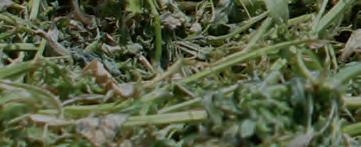












More yield. Better quality. ‘Nuff said. See how our alfalfa hybrids perform in your area at DairylandSeed.com *In 2017 – 2022 HybriForce-4400™ was grown in 816 Dairyland Seed on-farm HAY (Hybrid Alfalfa Yield) plot comparisons across ND, SD, MN, IA, WI, IL, IN and MI with a yield advantage of 7.1% across all cuts at all locations in the first three years of production against competitive alfalfas, excluding 2020 seeded plots. Hybrid responses are variable and subject to any number of environmental, disease and pest pressures. TM ® Trademarks of Corteva Agriscience and its affiliated companies. © 2022 Corteva. DS-08224530-HA-3 AGAINST COMPETITORS IN 816 HEAD-TO-HEAD, SIDE-BY-SIDE COMPARISONS
GRASSES AND GIRLS grow on this Wisconsin dairy
by Mike Rankin
ONE can only imagine what it was like for Daryl Woldt to get bathroom time back in the day, but you get the impression he wouldn’t have had it any other way. The fourth-generation dairy farmer and his wife, Amy, have dramatically grown their family business over the years while at the same time raising a quintet of daughters — Kelsey, Kayla, Kristen, Karly, and Kortney — who have all made farm contributions and continue to do so in some way, even though several now hold down other professional jobs.
But ladies aren’t the only thing at home on this farm. Woldt grows and harvests a variety of annual and perennial grasses for his 1,540 dairy cows — yes, more girls — and those of others. The grass revolution (or perhaps revelation) started about 15 years ago when he established some fields of tall

fescue and festulolium. “We still have some of those original fields,” Woldt said. “These days, we use more meadow fescue and less tall fescue while also adding a little red clover.”
Woldt Farms, which has been a home for dairy cows since 1911, has stretched to 4,500 acres of owned and rented land over the years. When Woldt was growing up, the family milked 32 cows. After getting married, Daryl and Amy expanded the herd to 80 cows around 1990, and it’s been a steady stream of adding cows, buildings, and daughters ever since.
Grass has a role — and sometimes multiple roles — on every acre of the Woldts’ land. The farm has 2,600 acres of brown midrib and conventional corn that is harvested mostly as silage. The remainder of cropped land consists of about 600 acres of alfalfa-meadow fescue mix, 600 acres of perennial grass, 300 acres of winter wheat, and 250 acres of winter rye that is grown for cover crop seed. More on that later.
ial grass fields are cut six times per year for optimum forage quality. For years, they were stored either in silage bags or on a dedicated grass silage pile and fed through a total mixed ration along with the alfalfa-grass mixture and corn silage. Recently, that strategy has changed — or at least it has from spring through fall — when Woldt began greenchopping his grasses about three years ago.
“We always had the grasses, and our Claas dealer suggested we try greenchopping,” Woldt said. “He had spent a lot of time in Europe where greenchopping is common. We’ve found that it seems to work well with our manure program. We can take off the greenchop and apply liquid manure right away throughout the summer.”
Woldt has three self-propelled forage harvesters, and now one of them is equipped with a direct-cut head that is dedicated to greenchopping.
“In our second year of greenchopping,
22 | Hay & Forage Grower | January 2023
All photos Mike Rankin
Kortney Woldt, the youngest of five daughters, drives a semi to deliver alfalfa from the chopper to the silage pile last summer.
we tested using a front-mounted mower with a self-loading forage wagon that is popular in Europe, but we didn’t like that at all,” Woldt explained. “We could only cut 10 feet compared to 20 feet with the direct-cut head. We also noticed that with any curves in the fields we were leaving strips because the wagon didn’t exactly follow the cutter. The other issue was that the precutter on the wagon couldn’t get the particle length as short as we wanted it. So now, we just use the direct-cut head and chop into a dump wagon or semitrailer,” he added.
Woldt is pleased with the greenchop system but admits that it takes someone to do it every day. Rain events can also be a challenge. The feeding software used on the farm has the ability to formulate two different rations for the same group of cows — one with greenchop and one with grass silage. If the fields are too wet to greenchop, they mix the alternative ration using conventionally harvested grass off their silage pile, as they do in the winter.

In the spring, when grass growth is rapid, Woldt will begin greenchopping when the grass is about a foot tall. Once fields reach a certain stage of maturity, he will harvest the grass for stored feed and go back to the initial field for greenchopping. “If it gets dry and growth slows, we just keep greenchopping,” he noted.
“The greenchop is feed that goes directly to the mixer,” Woldt said of the system’s advantages. “It doesn’t have to be put on a pile, it doesn’t have to be packed, it doesn’t have to be covered, it doesn’t have to be faced off the pile, and there’s no shrink.”
Once harvested, Woldt uses trucks equipped with pumps that provide a uniform manure application pattern across the harvested grass fields. About 6,000 gallons of manure are applied after each cutting to provide nitrogen, which is essential for optimum yields. If field conditions are such that they can’t apply manure, then commercial fertilizer is used. “We see a huge difference in the grass where manure gets applied and where it doesn’t,” Woldt noted. “I think greenchopping allows us to use the nutrients in the manure much more quickly and efficiently.”
Cereal enthusiasts
Annual forages and cover crops are also being utilized in a plethora of roles in the farm’s cropping system.
Winter rye (or sometimes triticale) is no-till seeded in the fall following corn silage harvest. Some of those acres are harvested for ryelage in the spring. For the remaining acres, corn is “planted green” into the rye, which is then sprayed with glyphosate either just before or at planting.
Using a dribble bar, Woldt applies about 8,000 gallons per acre of manure to the winter rye after it has emerged in the fall. That treatment is repeated in the spring as the cover crop is growing, and then again soon after the corn has emerged. For fields where the rye is harvested as forage, the third application is made following cereal harvest but before planting corn.
Winter wheat is grown for grain, but of equal importance is the straw. It’s chopped dry, stored in silage bags, and then utilized in dry cow rations.
“On the wheat fields harvested this year [2022], we seeded a mixture of oats, clover, vetch, and winter rye,”
Woldt said. “We then took a cutting in late October and will plant corn into the surviving winter rye next spring.”
Cow chow
The high-producing Holstein cow group at Woldt Farms is currently being fed a ration that is 53% forage on a dry-matter basis. Seventy-five percent of the forage component is BMR corn silage with the remainder made up of alfalfa-grass haylage and perennial grasses, either greenchop or ensiled. Silage from conventional corn hybrids is used in heifer rations along with ryelage.
When they started greenchopping, the cows received as much as 11 pounds of greenchop dry matter per day. More recently, that has been cut back to 6 pounds. “By doing so, if the grass does get a little too mature, or is very immature, it doesn’t make a big impact on the ration,” Woldt explained. “I’d like to feed more grasses and alfalfa, but my nutritionist favors higher levels of corn silage,” he added.

Forages get tested every two weeks for quality and moisture. In between laboratory tests, a Koster moisture tester is used to monitor any changes in dry matter. The greenchop gets tested for moisture every day. Moisture contents are entered into the feeding software, which automatically adjusts rations accordingly. Woldt noted that moisture on the greenchopped forage can range from 76% to 83%.
Multiple enterprises, too
Through the years, Woldt has expanded, contracted, or changed with multiple dairy-related enterprises. The
continued on following page >>>
January 2023 | hayandforage.com | 23
Kelsey Woldt works full time on the farm and plans to eventually take over the management duties from her parents.
Woldt Farms grows and harvests about 600 acres of an alfalfa-meadow fescue mixture.
farm grows and stores enough feed to be able to sell inventory to other farms. Some of their customers purchase all of their forage from the Woldts, while others just purchase silage or haylage as the need arises. In one case, the farm provides a complete total mixed ration to another nearby dairy on a daily basis.
Woldt used to do a lot of custom forage harvesting, but that ended when they built their last freestall barn and expanded their own herd to its current level. “It just became more important for us to get our forage harvested at the proper time,” Woldt said. “Occasionally, we sell some of our standing crops to other farms off the fields, but we still do the harvesting and delivery.”

One enterprise that is currently thriving and in high demand is their custom manure pumping, hauling, and application business. They operate a full line of manure application equipment, including pumps, tankers, application toolbars, agitation equipment, draglines, and hoses.
Along with a business partner, Woldt Farms also has a silage bagging business. They rent out bagging machines and sell bags and plastics for covering bunker and pile silos. They also offer secure covers, gravel bags, and tire sidewalls.

The newest enterprise undertaken by the Woldts is an on-farm store,
which is managed by the youngest daughter, Kortney, who is a graduate of the University of Wisconsin-Stevens Point with a double major in business and soil science. Opened in May 2022, the store features cuts of the farm’s beef along with other locally produced specialty farm products such as cheese, maple syrup, goat milk products, and much more. The totally remodeled store is housed in the former workshop of Woldt’s father, Hugo.
Looking to the future
Although it’s always difficult to know for sure how things will look in 10, 20, or 30 years down the road, Woldt Farms
LLC appears to be well positioned to grow and prosper. Currently, the farm employs about 30 full-time workers and many part-time employees who fill in on weekends and during heavy workload times. Amy takes care of the payroll bookwork along with other office tasks. As with most farms, finding and keeping good labor is a major challenge.
Kelsey, the eldest of the daughters, is a graduate of the University of Wisconsin-River Falls with degrees in agricultural business and dairy science. She works on the farm full time, involving herself in all aspects of the operation. She’s positioned to be the farm’s future manager when her parents decide to take a step back.
“We’d like to milk more cows if we could find a home for the milk,” Woldt said of what he sees for the future. “Our feed business is good, but it’s riskier than providing feed for our own cows. We can never know who might go out of the dairy business or make other arrangements for feed.”
Regardless of how things might change in the future, it would still be a pretty good bet that cows, grass, and girls will be positioned in the picture. •
For more information on Woldt Farms LLC, its various enterprises, and the Woldt family, visit woldtfarms.com.
24 | Hay & Forage Grower | January 2023
Daryl Woldt uses a variety of grasses, corn silage, and alfalfa to help fuel the over 1,500 Holstein cows that are milked daily on the farm.
A load of grass greenchop is dumped for inclusion into Woldt Farms’ total mixed ration. Greenchopping is a daily routine on the operation.
A wet fall is cause for mycotoxin concerns
FALL weather often brings cool and wet conditions that can stimulate mold growth in crops prior to harvest. This can boost mycotoxin levels in silage.
Mycotoxins are toxins produced by some molds (fungi) on plants to reduce activity of other molds or bacteria. There are hundreds of mycotoxins, all with complex chemical structures, although only a few are thought to impact mammals if they are eaten.
As most molds do not produce mycotoxins, their visual presence in a silage, or even high levels of mold spores, does not mean that mycotoxins are present — although they might be. However, molds will always, to some extent, reduce silage palatability and, because they consume the most fermentable parts of the crop, reduce its energy value.
Low levels of mycotoxins are in most silages under most conditions, and cattle frequently consume them. This is generally not a problem as rumen bacteria effectively detoxify many mycotoxins. However, if a diet is very high in mycotoxins, the ability of the bacteria to detoxify them may be overwhelmed. If this happens, mycotoxins escape the rumen, are absorbed from the intestine, and exert toxic effects on the animal. Common symptoms of this include:
• Reduced intake and milk production
• Greater frequency of ketosis and displaced abomasums
• Diarrhea in many impacted animals
• More swollen vulvas and nipples and vaginal or rectal prolapses
• Reduced fertility
• Increased early term abortions
Types to watch for
Mycotoxins found most frequently, and of greatest concern, are aflatoxin (produced by Aspergillus molds), zearalenone, T-2 toxin, deoxynivalenol (DON; a.k.a vomitoxin), fumonison (produced by Fusarium molds), and ochratoxin (produced by Penicillium molds).
Deoxynivalenol (DON) is considered a key mycotoxin as other mycotoxins are seldom found in silages if DON is
absent. Mycotoxin-producing molds are always present on crops in the field, so some mycotoxins are usually in crops at ensiling. As mold growth is spurred by wet field conditions, mycotoxins are more common in fall-harvested crops.
Current guidelines for maximum safe mycotoxin feeding levels*
Aflatoxin
mycotoxin levels, but there are levels that are generally considered safe. In addition, not all mycotoxins have been investigated sufficiently to create “safe” levels. Current guidelines for common mycotoxins are listed in the table.
Practices that help
Ensiling will not detoxify mycotoxins, which are largely produced in the field, as they are very stable. However, ensiling will dramatically reduce mold activity, at least if oxygen is unavailable. Good silo unloading practices (for example, keeping flat silo faces, 6- to 12-inch daily face removal, and no leftover silage at day’s end) will help prevent molds from growing once oxygen is available at load out.
The levels listed in the table are for total diet dry matter (DM). If you have corn silage with 500 parts per billion (ppb) aflatoxin that is fed at 20% of the diet DM, then its contribution to diet aflatoxin levels is 100 ppb. This leads to the most common strategy to limit mycotoxin toxicosis — dilution.
Zearalenone
At-risk cattle 15 ppm
Other cattle 25 ppm
*ppb = parts per billion, ppm = parts per million
Cattle are less prone to mycotoxin toxicity than nonruminants because rumen bacteria can detoxify most mycotoxins. At-risk cattle include calves with limited rumen function; cows with suboptimal rumen bacterial populations, such as fresh cows with low intakes; cows with high ruminal passage rates, such as high-producing cows; and recently bred cows.
Visible mold on silages indicates that mycotoxins may be present. If you see molds, inform your nutritionist, who can take a sample of the suspect silage and have it analyzed. Transport samples to the laboratory quickly since mycotoxins can be produced in the presence of oxygen after sampling. While most mycotoxins listed above can be analyzed for, the assay costs may be high, although not as high as the costs of animal losses if toxicosis occurs.
There are no totally safe dietary
If dilution is impractical, some dairies have success feeding 100 to 200 grams per cow per day of sodium bentonite, a form of clay that binds to mycotoxins so that they are inactivated and pass harmlessly through the gastrointestinal tract. Bentonites originate from many sources and differ in unknown ways. They are unlikely to be equally effective against all mycotoxins. This may explain why some dairies have success with bentonite and some do not. There are also companies that market mycotoxin binders, which act similarly to bentonite but will be more consistent.
If high levels of more than one mycotoxin are in silage, then we enter uncharted waters, and the feeding guidelines may or may not be valid. In such cases, be conservative with the feeding guidelines. Remember, DON is considered a key mycotoxin to assay, as others are seldom found in silages if it is absent. •
PETER ROBINSON
The author is a retired professor and dairy nutrition extension specialist with the University of California-Davis. His email is phrobinson133@gmail.com.

DAIRY FEEDBUNK
by Peter Robinson
January 2023 | hayandforage.com | 25
100
200
vomitoxin)
3 ppm Other cattle 5 ppm
At-risk cattle 30 ppm Other
50 ppm
50
At-risk cattle
ppb Other cattle
ppb Deoxynivalenol (DON;
At-risk cattle
Fumonisin
cattle
T-2 At-risk cattle
ppb Other cattle 100 ppb
Pasture forage quality impacts what cattle consume
 by Ed Rayburn
by Ed Rayburn
PASTURES are often the least-cost option for ruminant livestock production. In much of the Northeast, pasture and aftermath-grazed hay meadows are the largest portion of the agricultural acreage. University research provides guidelines on how to best manage pastures. However, how well livestock on farms utilize pasture is not often measured. The following is a summary of on-farm pasture research that provides a view of how well pastures are utilized when livestock graze in rotationally stocked pastures.
Rotationally stocked pastures on farms in West Virginia and southwestern New York were sampled before and after grazing. Each of the seven farms had four to eight paddocks, which were
sampled two or three times between May and November and over two to three years. Farm locations ranged from 39 to 42 degrees North latitude, at elevations from 1,000 to 2,600 feet above sea level.
Depending on the farm, pastures were grazed by beef cow-calf pairs, yearling steers or heifers, or lactating dairy cattle. Grasses in the pastures varied across farms and included orchardgrass, tall fescue, timothy, smooth bromegrass, bluegrass, bentgrass, and quackgrass. The legumes in the pastures included white clover, red clover, birdsfoot trefoil, and alfalfa.
In each pasture, 15 random forage samples were taken before and after grazing. Forage samples were clipped at ground level to recover as much of the live and dead material as possible.
Forage mass was measured as pounds
of dry matter (DM) per acre per grazing event. Pregrazing initial forage mass and postgrazing residual forage mass samples were analyzed for crude protein (CP), neutral detergent fiber (NDF), and total digestible nutrients (TDN) as a percentage of DM. The forage mass grazed off by livestock was calculated as the difference between the initial and residual forage mass for the grazing event.
Each data point on the graphs represents a pasture sampled during one grazing event. A total of 80 grazing events provided data on utilization of the initial forage mass and 66 grazing events provided data on the utilization of forage nutritional components. The variability in sampling pastures is high due to plant species diversity and livestock management. Because of this, 5% of the pastures were extremely far from
26 | Hay & Forage Grower | January 2023
Mike Rankin
Managing for high pasture quality is needed for optimum animal performance.
the regression average (greater than 2 standard deviations) and were considered outliers and removed.
Pasture utilization
The forage amount removed by grazing cattle was directly related to initial forage mass (Figure 1). Above a base forage mass of 700 pounds of DM per acre, 54% of the forage was removed by the grazing livestock. This is in line with the old saying of “take half and leave half.” The 700 pounds of DM per acre is significant in that it represents a residual height of 2 inches in an average pasture. This residual forage is tough, resistant to grazing, and also contains much of the carbohydrate reserves in grasses such as orchardgrass.
After accounting for the initial forage mass, grazed forage did not differ between farms. Two thirds of the samples ranged within 311 pounds DM per acre of the grazed forage trendline (Figure 1). In these on-farm projects, we had defined pregrazing and postgrazing heights. However, due to the relationship between livestock, forage, and human managers, there was a consistent pattern in grazed forage across pastures differing in plant species.
Pasture nutritive value
As pasture initial forage mass increased, the CP content of the initial forage mass dropped (Figure 2A), NDF content rose (Figure 3A), and TDN content declined (Figure 4A). After accounting for initial forage mass, there were no differences between farms in these nutritive value measurements.
The apparent intake of CP, NDF, and TDN in the forage mass grazed off the pastures increased as these nutritive components elevated in the initial forage mass (Figures 2B, 3B, and 4B, respectively). These relationships accounted for 73% to 80% of the variability in apparent intake.
Selective grazing is the ability of livestock to consume forage of a higher quality than the average quality in the pasture. Selective grazing for CP was uniformly positive across pastures at 20% above (1.2 times) the CP content in the initial forage mass (Figure 2B). For example, when the initial forage mass contained 20% CP, apparent intake CP averaged 24%.
Selective grazing for NDF was not
uniform (Figure 3B). Low-quality pastures, having a high NDF content in the initial forage mass, provided little selective grazing. When the initial forage mass contained 65% NDF, on average, there was no selection and average NDF intake was 65%. On high-quality pastures having only 45% NDF in the initial forage mass, livestock selectively grazed and average NDF intake was 35%, 10 percentage units lower (Figure 3B).
Since TDN is a function of NDF, selective grazing for TDN was also not uniform (Figure 4B). On pastures having 50% TDN in the initial forage mass, average TDN intake was 50%. On high-quality pastures having 65% TDN in the initial forage mass, average TDN intake was 70%.
Pasture utilization ranged from 11% to 80% of the initial forage mass. Across this range, percent utilization had little effect on selective grazing, impacting only CP intake. When the percent utilization was included in the CP of the initial forage mass versus CP apparent intake relation, the average absolute error improved by only 1 percentage unit, so percent utilization was not included in the analysis.
Pasture quality matters
Across farms, pastures differed in their initial forage mass; residual forage mass; grazed forage mass; the percentage of CP, NDF, and TDN in the initial forage mass; and the percentage of CP, NDF, and TDN in the grazed forage. Pasture forage height was not descriptive of the CP, NDF, or
TDN content in the initial forage mass. However, initial forage mass did a good job of describing trends in CP, NDF, and TDN content in the forage. As initial forage mass increased, the NDF content also rose while CP and TDN content declined.
After accounting for differences in initial forage mass, there were no differences between farms in the amount of forage grazed off the pastures. The apparent intake of CP, NDF, and TDN were highly and positively related to the content of the respective component in the initial forage mass. After accounting for CP, NDF, or TDN in the initial forage mass, the apparent intake of these components followed the same pattern across all the farms.
Livestock displayed selective grazing across pastures, with selection occurring primarily on high-quality pastures. This demonstrates that managing for high pasture quality is needed for optimum animal performance. Animals not needing high-quality forage will do well on lower quality pasture that does not allow for selective grazing.
The CP and NDF content in a pasture’s initial forage mass is dependent on legume content (legumes are higher in CP and lower in NDF than grasses) and maturity of the forage (younger forage is higher in CP and lower in NDF than older forage).
In spring, when plants are growing rapidly, regrowth intervals between grazing events of three weeks pro-
continued on following page >>>
January 2023 | hayandforage.com | 27
4,000 3,000 2,000 1,000 0 Grazed forage mass (lbs. DM/acre) Initial forage mass (lbs. DM/acre) 0 1,000 2,000 3,0004,0005,0006,0007,000
Figure 1. Effect of the initial mass on the amount of forage grazed.*
•Forage mass (FM) grazed off pastures (lbs. DM per acre) was 54% of the forage above 700 lbs. DM per acre of initial mass. Different color markers dipict pastures on different farms.
vide good forage growth and high forage quality. In midsummer, when cool-season forages have slower growth rates, regrowth intervals of five to six weeks provide adequate regrowth of high-quality forage.
When summer regrowth intervals
exceed six weeks, forage quality drops as leaves age and die. After accounting for initial forage mass and its quality, utilization of the forage and apparent intake of CP, NDF, and TDN was uniform across farms and the forage species being utilized. •

28 | Hay & Forage Grower | January 2023
ED RAYBURN
The author is an extension forage specialist with West Virginia University.
25 20 15 10 5 0 Initial forage mass CP% Initial forage mass (lbs. DM/acre) 0 1,000 2,000 3,0004,0005,0006,0007,000 A 35 30 25 20 15 10 5 0 Apparent intake CP% Initial forage mass CP% 05 10 15 20 25 B
Figure 2. Effect of the initial forage mass (A) and its CP content (B) on CP content (A) and CP apparent intake (B).
80 75 70 65 60 55 50 45 40 35 30 25 20 Apparent intake NDF% Initial forage mass NDF% 35 40 45 50 55 6065 70 B 70 65 60 55 50 45 40 35 Initial forage mass NDF% Initial forage mass (lbs. DM/acre) 0 1,000 2,000 3,0004,0005,0006,0007,000 A
Figure 3. Effect of the initial forage mass (A) and its NDF content (B) on NDF (A) and NDF apparent intake (B).
70 65 60 55 50 Initial forage mass TDN% Initial forage mass (lbs. DM/acre) 0 1,000 2,000 3,0004,0005,0006,0007,000 A 80 75 70 65 60 55 50 Apparent intake TDN% Initial forage mass TDN% 50 55 60 65 70 B
Figure 4. Effect of the initial mass (A) and its TDN content (B) on TDN content (A) and TDN apparent intake (B).
Fat and fatty acid analysis is evolving
FEED and forage analysis interpretation in most cases begins and ends with a focus on protein and carbohydrate measures. The prior two articles in this series centered upon improving your ability to understand these two nutrient content sections on the feed analysis report.


In each of these previous two categories, there are historic crude measures and also more current detailed and accurate measures. For example, amino acid measures are more accurate and precise than crude protein measures. Or, in the carbohydrate category, sucrose and fructose measures are more definitive than the crude water-soluble carbohydrate sugar measure.
Animal nutrition is advancing with more accurate laboratory measures in support of more precise and efficient nutrition programs on dairy or beef farms. Over the past five to 10 years, the fat analysis section on your feed analysis report has evolved in a similar fashion. This energy dense section of the feed analysis reports crude fat measures as well as more precise and accurate total and individual fatty acid amounts.
Prior to describing the fat measures, we need to differentiate fat’s nutritional impact from protein or carbohydrates to better interpret the fat feed analysis report section. Protein provides usable amino acids for growth and development. Carbohydrates provide digestible energy, which kick off a nutrient digestion and metabolism cascade in the rumen. Protein and carbohydrates are somewhat co-dependent with one another, but fat is different.
Packed with energy value
Fat is energy dense, containing roughly twice the caloric value of starch and sugars and substantially more energy than protein. Traditional nutrition programs have balanced fat in diets to ensure adequate calories and energy are available, with an emphasis on maintaining body condition or supporting high dairy cow performance. Crude fat, also known as ether extract, has done a great job
of accounting for fat’s caloric value on your feed analysis report.
In the laboratory, this fat extraction technique uses an ether reagent to extract fat and fatty acid like compounds, and then reports total fat content by difference. For example, if a laboratory technician starts with 100 grams, and extracts 3 grams with the ether extraction technique, the fat by ether extract value is reported as 3% of dry matter.
As dairy nutrition and research has evolved, more accurate and precise measures have led the way. Similar to the other feed analysis sections, more current and precise measures for fat are now reported. Individual and total fatty acid measures have become common on your feed analysis report. These measures have become a focal point in nutrition, recognizing that fat in dairy and beef diets has brought more than just energy to the diet.
The specific fatty acid effects can be positive or negative. For example, a mere 2 grams of trans-10, cis-12 C18:2 fatty acid bypassing the rumen will crash milkfat in dairy cows. This fatty acid is derived from unsaturated fatty acids in the diet, and corn oil is rich in unsaturated fatty acids. Do not worry about the biochemistry involved here, but recognize that nutritionists are beginning to account for specific fatty acids in diet formulation while also balancing total fat. Hence, feed analysis reports today list myristic, palmitic, stearic, oleic, linoleic, and linolenic fatty acids.
These fatty acids are 14 to 18 carbon chains long. Palmitic and stearic acids
are predominant fatty acids in animal fat, or lard. These are saturated fatty acids and are fairly inert within the rumen. The oleic, linoleic, and linolenic fatty acid concentrations are unsaturated fats. These unsaturated fatty acids are known to have different effects in animal nutrition.
Not all are equal
Nutritionists will feed fatty acid supplements that are rich in these different fatty acids to achieve different goals. They will also sum up the oleic, linoleic, and linolenic acid values to define rumen unsaturated fatty acid load, or RUFAL. Nutritionists monitor the total diet RUFAL amount as a risk factor with milkfat depression. Oleic acid is a focal point with dietary fatty acid digestibility and is also a predominant fatty acid in Plenish soybeans. The RUFAL focus or Plenish soybeans represent two examples where specific fatty acid measures are relevant.
There are not well-recognized benchmarks for forages to consider at this point. In the future, we will continue to explore varieties or hybrids with unique, specific fatty acid characteristics. We will also further move away from crude fat measures as we balance dietary fatty acids much like we do when balancing for amino acids.
The fat section on the feed analysis report is relatively brief compared to protein or carbohydrate categories. However, this energy dense section of the report has evolved in complexity much like protein and carbohydrate measures have become more specific. Future animal nutrition efforts will continue to emphasize both the total caloric value from fat as well as targeting specific fatty acids to improve animal health and performance. •
FEED ANALYSIS by John Goeser
Mike Rankin
JOHN GOESER
The author is the director of nutrition research and innovation with Rock River Lab Inc, and adjunct assistant professor, University of Wisconsin-Madison’s Dairy Science Department.
January 2023 | hayandforage.com | 29
In the future, forage varieties and hybrids will be selected for unique and specific fatty acid characteristics.
NEED HELP HANDLING LARGE ROUND BALES? WORKSAVER HAS THE ANSWER!




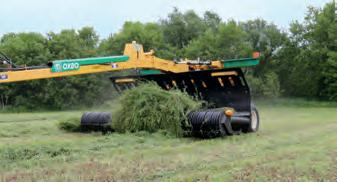

DBH-6000, 3-pt. Bale Spear




Worksaver’s DBH-6000 is the right attachment for transporting two round bales at once. Its rugged 76” wide square frame design with four bolt-in spears allows the transport of two 6-ft. round bales, reducing trips




BUYERS MART 30 | Hay & Forage Grower | January 2023 DESIGNED. ENGINEERED. REMARKABLE VALUE.
Five Merger Models Ranging from 12 to 40-feet No matter the size of your operation, there is an Oxbo designed to fit your needs. WE LEAD. OTHERS FOLLOW. sale ends feb. 28th works in all kinds of climates with all kinds of forage. made for all sizes of square balers. decrease fuel usage more uniform bales extend your baler life baleskiis.com 866-889-3846 call: visit: $ 50 $ 100 Round up your profits, NOT YOUR BALES. Let Norden show you why grouping small square bales leads to better quality hay and higher profits. Cash in on the benefits of a Norden system at nordenmfg.com 877-296-5851 nordenmfg.com








































January 2023 | hayandforage.com | 31 BUYERS MART • #1 Silage Facer • No Moving Parts • No Effect on Particle Length • No Downtime for Repairs PATENT #7,588,203, #8,011,608, and #8,336,795 SILAGE FACER www.easyrakefacer.com 800.THE.SILO HANSONSILO.COM ® With a Swing-Max Tandem Power Hitch, you can double the baling production of your tractor. Take PTO power from your tractor, split it in two, and easily operate two balers at once. The Swing-Max boom, with its steerable second dolly, allows you to instantly adapt to windrow conditions while swinging inline for single file travel and corner control. 1-519-887-9910 www.marcrestmfg.com • Easy to use all hydraulic operation • In-cab speed adjust • 31 ft. raking width • 7 bar system Introducing . . . 6707 Bar Rake The difference Better quality hay under varying conditions Proudly made in the USA Full line of applicators. Exceptional customer service. Organic certified. Custom Operators Wanted N4852 County Road C ~ Ellsworth WI 54011 Office: 715-273-3739 Cell: 612-812-7939 www.multisile.com deatonnutrition@dishup.us Crop Specific Inoculant Haylage & Small Grains & Small Grains & Small Grains Dry Hay Dry Hay Dry Hay--up to 26% moisture up to 26% moisture up moisture Corn Silage Corn Silage Silage Hi Hi Hi---Moisture Corn Moisture Corn Moisture
Pitbull Blades are available in Four Wheel Drive Tractor Models and Front Wheel Assist Tractor Models. Built using T1 grade steel with AR400 wear points, Pitbull Blades are made in Canada and come with a 2-Year

internationalgrasslands.org




BUYERS MART U.S. Postal Service STATEMENT OF OWNERSHIP, MANAGEMENT AND CIRCULATION 1. Publication Title: Hay & Forage Grower 2. Publication No.: 021-713 3. Filing Date: September 19, 2022 4. Issue Frequency: January, February, March, April/May, August/September and November 5. No. of Issues Published Annually: 6 6. Annual Subscription Price: $0 7. Complete Mailing Address of Known Office of Publication: 28 Milwaukee Avenue West, PO Box 801, Fort Atkinson, Jefferson County, WI 53538-0801. Contact Person: Brian V. Knox, Telephone: 920-563-5551. 8. Complete Mailing Address of Headquarters or General Business Office of Publisher: 28 Milwaukee Avenue West, PO Box 801, Fort Atkinson, Jefferson County, WI 53538-0801. 9. Full Names and Complete Mailing Addresses of Publisher, Editor, and Managing Editor: Publisher: W. D. Hoard & Sons Company, Brian V. Knox, 28 Milwaukee Avenue West, PO Box 801, Fort Atkinson, WI 53538-0801. Editor: Managing Editor: Michael C. Rankin, 28 Milwaukee Avenue West, P.O. Box 801, Fort Atkinson, WI 53538-0801 10. Owner: Hay & Forage LLC, 28 Milwaukee Ave. W, Fort Atkinson, WI 53538; Paris M Knox 1990 Educational Trust, 28 Milwaukee Ave., W, Fort Atkinson, WI 53538; Gillian V. Knox 1990 Educational Trust, 28 Milwaukee Ave., W, Fort Atkinson, WI 53538; Brian V. Knox II 1992 Educational Trust, 28 Milwaukee Ave., W, Fort Atkinson, WI 53538; Gregory J. Mode, 28 Milwaukee Ave., W, Fort Atkinson, WI 53538; Gina L. Mode, 28 Milwaukee Ave., W, Fort Atkinson, WI 53538 11. Known Bondholders, Mortgagees, and Other Security Holders Owning or Holding 1 Percent or More of Total Amount of Bonds, Mortgages or Other Securities: None 12. Tax Status (for completion by non-profit organizations authorized to mail at non-profit rates: N/A 13. Publication Title: Hay & Forage Grower 14. Issue Date for Circulation Data Below: August/September 2022 15. Extent and Nature of Circulation: Average No. Copies Each Issue During Preceding 12 Months: a. Total Number of Copies (Net Press Run): 51,409 b. Legitimate Paid and/or Requested Distribution (By mail and outside the mail): 1. Outside County Paid/Requested Mail Subscriptions stated on PS Form 3541. (Include direct written request from recipient, telemarketing, and Internet requests from recipient, paid subscriptions including nominal rate subscriptions, employer requests, advertiser’s proof copies, and exchange copies.): 31,339 2. In-County Paid/Requested Mail Subscriptions stated on PS From 3541.(Include direct written request from recipient, telemarketing, and Internet requests from recipient, paid subscriptions including nominal rate subscriptions, employer requests, advertiser’s proof copies, and exchange copies.): 0 3. Sales Through Dealers and Carriers, Street Vendors, Counter Sales and Other Paid or Requested Distribution Outside USPS®: 0 4. Requested Copies Distributed by Other Mail Classes Through the USPS (e.g. First-Class Mail®): 0 c. Total Paid and/or Requested Circulation (Sum of 15b (1), (2), (3) and (4)): 31,339 d. Non-requested Distribution (By mail and outside the mail) 1. Outside County Nonrequested Copies Stated on PS Form 3541 (Include sample copies, requests over 3 years old, requests induced by a premium, builk sales and requests including association requests, names obtained from business directories, lists, and other sources): 19,455 2. In-County Nonrequested Copies Stated on PS Form 3541 (Include sample copies, requests over 3 years old, requests induced by a premium, bulk sales and requests including association requests, names obtained from business directories, lists, and other sources): 0 3. Nonrequested Copies Distributed Through the USPS by Other Classes of Mail (e.g. First-Class Mail, nonrequestor copies mailed in excess of 10% limit mailed at Standard Mail® or Package Services rates): 0 4. Nonrequested Copies Distributed Outside the Mail (Include pickup stands, trade shows, showrooms, and other sources): 387 e. Total Nonrequested Distribution (Sum of 15d (1), (2), (3) and (4)): 19,842 f. Total Distribution (Sum of 15c and e): 51,181 g. Copies not Distributed (See Instructions to Publishers #4 (page #3): 229 h. Total (Sum of 15f and g): 51,410 i. Percent Paid and/or Requested Circulation (15c divided by 15f times 100): 61.23% 15. Extent and Nature of Circulation: No. Copies of Single Issue Published Nearest to Filing Date: a. Total Number of Copies (Net Press Run): 50,918 b. Legitimate Paid and/or Requested Distribution (By mail and outside the mail): 1. Outside County Paid/Requested Mail Subscriptions stated on PS Form 3541. (Include direct written request from recipient, telemarketing, and Internet requests from recipient, paid subscriptions including nominal rate subscriptions, employer requests, advertiser’s proof copies, and exchange copies.): 34,049 2. In-County Paid/Requested Mail Subscriptions stated on PS From 3541.(Include direct written request from recipient, telemarketing, and Internet requests from recipient, paid subscriptions including nominal rate subscriptions, employer requests, advertiser’s proof copies, and exchange copies.): 0 3. Sales Through Dealers and Carriers, Street Vendors, Counter Sales and Other Paid or Requested Distribution Outside USPS®: 0 4. Requested Copies Distributed by Other Mail Classes Through the USPS (e.g. First-Class Mail®): 0 c.Total Paid and/or Requested Circulation (Sum of 15b (1), (2), (3) and (4)): 34,049 d. Non-requested Distribution (By mail and outside the mail) 1. Outside County Nonrequested Copies Stated on PS Form 3541 (Include sample copies, requests over 3 years old, requests induced by a premium, builk sales and requests including association requests, names obtained from business directories, lists, and other sources): 16,077 2. In-County Nonrequested Copies Stated on PS Form 3541 (Include sample copies, requests over 3 years old, requests induced by a premium, bulk sales and requests including association requests, names obtained from business directories, lists, and other sources): 0 3. Nonrequested Copies Distributed Through the USPS by Other Classes of Mail (e.g. First-Class Mail, nonrequestor copies mailed in excess of 10% limit mailed at Standard Mail® or Package Services rates): 0 4. Nonrequested Copies Distributed Outside the Mail (Include pickup stands, trade shows, showrooms, and other sources): 425 e. Total Nonrequested Distribution (Sum of 15d (1), (2), (3) and (4)): 16,502 f. Total Distribution (Sum of 15c and e): 50,551 g. Copies not Distributed (See Instructions to Publishers #4 (page #3): 367 h. Total (Sum of 15f and g): 50,918 i. Percent Paid and/or Requested Circulation (15c divided by 15f times 100): 67.36% 16. Electronic Copy Circulation: Hay & Forage Grower. Average No. Copies Each Issue During Previous 12 Months: a. Requested and Paid Electronic Copies: 0 b. Total Requested and Paid Print Copies (Line 15C) + Requested/Paid Electronic Copies (Line 16a): 31,339 c. Total Requested Copy Distribution (Line 15f) + Requested/Paid Electronic Copies (Line 16a): 51,181 d. Percent Paid and/or Requested Circulation (Both Print & Electronic Copies) (16b divided by 16c X 100): 61.23%. 16. Electronic Copy Circulation Hay & Forage Grower. No. Copies of Single Issue Published Nearest to Filing Date: a. Requested and Paid Electronic Copies: 0 b. Total Requested and Paid Print Copies (Line 15C) + Requested/Paid Electronic Copies (Line 16a): 34,049 c. Total Requested Copy Distribution (Line 15f) + Requested/Paid Electronic Copies (Line 16a): 50,551 d. Percent Paid and/or Requested Circulation (Both Print & Electronic Copies) (16b divided by 16c X 100): 67.36%. I certify that 50% of all my distributed copies (electronic & print) are legitimate requests or paid copies. 17. Publication of Statement of Ownership for a Requester Publication is required and will be printed in the November 2022 issue of this publication. 18. I certify that all information furnished on this form is true and complete. I understand that anyone who furnishes false or misleading information on this form or who omits material or information requested on the form may be subject to criminal sanctions (including fines and imprisonment) and/or civil sanctions (including civil penalties). Brian V. Knox, Publisher September 19, 2022


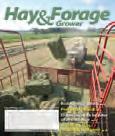


















January 2023 | hayandforage.com | 33 BUYERS MART Missing back issues? To view previous issues online, visit: hayandforage.com/issues (800) 552-3295 WINTER DISCOUNTS now available! Point 5 U.S. QUALITY ASSURANCE CERTIFIED ®Sealpro $2.50 per word per issue.10 word minimum. 920-563-5551 ext. 125 FARM EQUIPMENT BALEWAGONS: New Holland self-propelled & pull-type models/ parts/tires/manuals. Can finance/ deliver. 208-880-2889, www. balewagon.com JAWIBA/15 4 Safe practices 4 Educational Resources silagesafety.org SEND EVERYONE HOME SAFE SAFETY FOUNDATION
American Forage & Grassland Council
Annual Conference
January 8 to 11, Winston-Salem, NC
Details: afgc.org
Northwest Hay Expo
January 18 and 19, Kennewick, Wash.
Details: wa-hay.org
Virginia Winter Forage Conferences
January 24 to 27 (four locations)
Details: vaforages.org/events/
Southwest Hay Conference
January 26 and 27, Ruidoso, N.M.
Details: nmhay.com
Driftless Region Beef Conference
January 26 and 27, Dubuque, Iowa
Details: aep.iastate.edu/beef/
Western Alfalfa Seed Growers Assn.
Winter Seed Conference
January 29 to 31, Las Vegas, Nev.
Details: wasga.org
Cattle Industry Convention
NCBA Trade Show
February 1 to 3, New Orleans, La.
Details: convention.ncba.org
U.S. Custom Harvesters Convention
February 2 to 4, Omaha, Neb.
Details: uschi.com
GrassWorks Grazing Conference
February 2 to 4, Wisconsin Dells, Wis.
Details: grassworks.org
World Ag Expo
February 14 to 16, Tulare, Calif.
Details: worldagexpo.com
Heart of America Grazing Conference
February 20 and 21, Ferdinand, Ind.
Details: indianaforage.wordpress.com
Alfalfa and Stored Forage Conference
February 21, Cave City, Ky.
Details: forages.ca.uky.edu
SW Missouri Spring Forage Conference
February 21, Springfield, Mo.
Details: springforageconference.com
Midwest Forage Symposium
February 21 and 22, Wisconsin Dells, Wis.
Details: midwestforage.org
International Grassland Congress
May 14 to 19, Covington, Ky.
Details: internationalgrasslands.org
On we go
Hay prices continue their historically record-high run, and there’s really no clear path that indicates things will change with the onset of the new year. To be sure, regional hay-price differences exist, with the lowest prices being seen in the Midwest.
Good snows in the West during Decem-
ber have offered some optimism, but that trend needs to continue. Good moisture in drought areas would go a long way in pushing hay inventories back up.
The prices below are primarily from USDA hay market reports as of the beginning of mid-December. Prices are FOB barn/stack unless otherwise noted. •
For weekly updated hay prices, go to “USDA Hay Prices” at hayandforage.com
HAY MARKET UPDATE
FORAGE IQ 34 | Hay & Forage Grower | January 2023
Supreme-quality alfalfa Price $/ton Nebraska (western) 260 California (central SJV) 460-470(d)Nebraska (Platte Valley)-lrb 200-230 California (southeast) 385 Oregon (Harney) 300 Colorado (northeast) 300(d)Oregon (Lake County) 315 (o) Idaho (south central) 300Pennsylvania (southeast) 275-315 Iowa-ssb 310 South Dakota (Corsica)-lrb 205-235 Iowa (Rock Valley) 235-285 Texas (west) 280-320(d) Kansas (northeast) 300(d)Washington 310-330 Kansas (southeast) 250 Wisconsin (Lancaster) 150-165 Kansas (south central) 330-340(d)Wyoming (eastern) 260-265 Minnesota (Sauk Centre) 180-235 Fair-quality hay Price $/ton Missouri 250-300California (southeast) 305-320 Montana 280 Colorado (northeast) 250-275 New Mexico (central) 355 Idaho (southeast) 230 (d) Oklahoma (central) 225 Iowa (Rock Valley)-lrb 173 Oklahoma (northwest) 325 (d)Kansas (northwest) 300 Oregon (Lake County) 365Kansas (south central)-lrb 220-290 South Dakota 300Minnesota (Pipestone)-lrb 165-185 Texas (Panhandle) 385-410(d)Minnesota (Sauk Centre)-lrb 140-185 Texas (west)-ssb 366-433Missouri-lrb 125-150 Washington 355 (d)Montana 225-235 Premium-quality alfalfa Price $/ton New Mexico (north central) 150 California (intermountain) 315 Oregon (Lake County) 250 California (southeast) 380Pennsylvania (southeast)-ssb 240 (d) Colorado (southeast) 320 South Dakota (Corsica)-lrb 200 Iowa-ssb 260 Wisconsin (Lancaster) 120-145 Iowa (Rock Valley)-lrb 228-240 Bermudagrass hay Price $/ton Kansas (north central) 300Alabama-Premium lrb 113-200 Kansas (northwest) 300California (southeast)-Premium ssb 350-375 Kansas (south central) 320-330California (southeast)-Good 210 (d) Minnesota (Pipstone) 235 Texas (central)-Good/Prem lrb 208-240 Minnesota (Sauk Centre) 180-195Texas (southern)-Good/Prem ssb 260-330 Missouri 180-250 Bromegrass hay Price $/ton Montana 250 Colorado (northeast)-Premium 140 (d) Montana-ssb 350 Kansas (northeast)-Good lrb 170 Nebraska (central) 280 Kansas (southeast)-Premium 225 Oklahoma (central) 380(d) Orchardgrass hay Price $/ton Oregon (Harney) 300-325Oregon (Crook-Wasco)-Premium ssb 420-450 Pennsylvania (southeast)-ssb 375 Pennsylvania (southeast)-Premium 260-285 South Dakota (Corsica)-lrb 240-255 Timothy hay Price $/ton Texas (Panhandle) 330-365(d)Pennsylvania (southeast)-Premium 265 Washington-ssb 350 Pennsylvania (southeast)-Good ssb 310-330 Wisconsin (Lancaster) 170-180Washington-Fair 150 Wyoming (western)-ssb 285-320 Oat hay Price $/ton Good-quality alfalfa Price $/ton Oregon (Lake County)-Good 220 California (central SJV) 450(d)South Dakota (Corsica)-Good lrb 155 California (southeast)-ssb 400Wyoming (western)-ssb 200 Colorado (northeast) 275 (d) Wheat Straw Price $/ton Kansas (northwest) 230-260Iowa 175 Kansas (southeast) 200-270Iowa (Rock Valley)-lrb 138-160 Minnesota (Pipestone)-lrb 195-210Kansas 110 Minnesota (Sauk Centre) 155-225Minnesota (Sauk Centre) 100-120 Missouri-lrb 150-180Pennsylvania (southeast) 140-165 Montana 225-250Washington 110 (d) Abbreviations: d=delivered, lrb=large round bales, ssb=small square bales, o=organic
MM 701, 890, 1101 & 1301
MERGE MAXX ®
Twin & Triple Mergers
24', 30', 36', & 42' continuous pickup widths
MAXIMUM PRODUCTIVITY AND PERFORMANCE
The MM 01 Series twin and triple Merge Maxx ® hay mergers are unique in the industry and unmatched in their simplicity of operation, durability and merging capabilities. These machines offer pickup widths of 24’, 36’ and 42’ and complement the 30’ pickup of the existing MM 890 in our commercial merger lineup.
All KUHN’s 01 Series models now include easy to use technology and software. The IntelliMerge ™ system allows an operator to run, adjust, and receive machine diagnostics and feedback on an intuitive color display. The OptiSense ™ belt stall system (optional on MM 701) alerts the operator to when the belts start to slow down when approaching the capacity of the merger.
Durable, yet gentle crop handling provided by high-capacity pickups





Multiple options to merge left, right, split or either wing raised
Visit our website to locate a Dealer near you! Floating windguard is automatically optimized for differing crop volumes

INVEST IN QUALITY ®
www.kuhn.com
Leaf loss is substantially reduced with standard crop netting



BIG BALES. BIGGER PROFITS. The Hesston by Massey Ferguson® LB2200 Series large square baler is our most reliable, most productive baler ever. Designed for minimal servicing, maximum uptime, high capacity and dense, high-quality bales, this is the machine to take your operation to the next level. ©2023 AGCO Corporation. Massey Ferguson is a worldwide brand of AGCO Corporation. Hesston is a brand of AGCO. AGCO, Massey Ferguson and Hesston are trademarks of AGCO. All rights reserved. | MF22N001FC Learn more at www.masseyferguson.us, or visit your dealer today to get baling.
GROW MORE & YOUR ROI PROTEIN
Alfalfa is key to healthy soils and provides more protein per acre than other cropping choices. It is the ultimate regenerative crop, increasing biodiversity and enhancing ecosystems. Quality alfalfa rations enhance your dairy operation’s overall ROI while strengthening your environmental footprint.
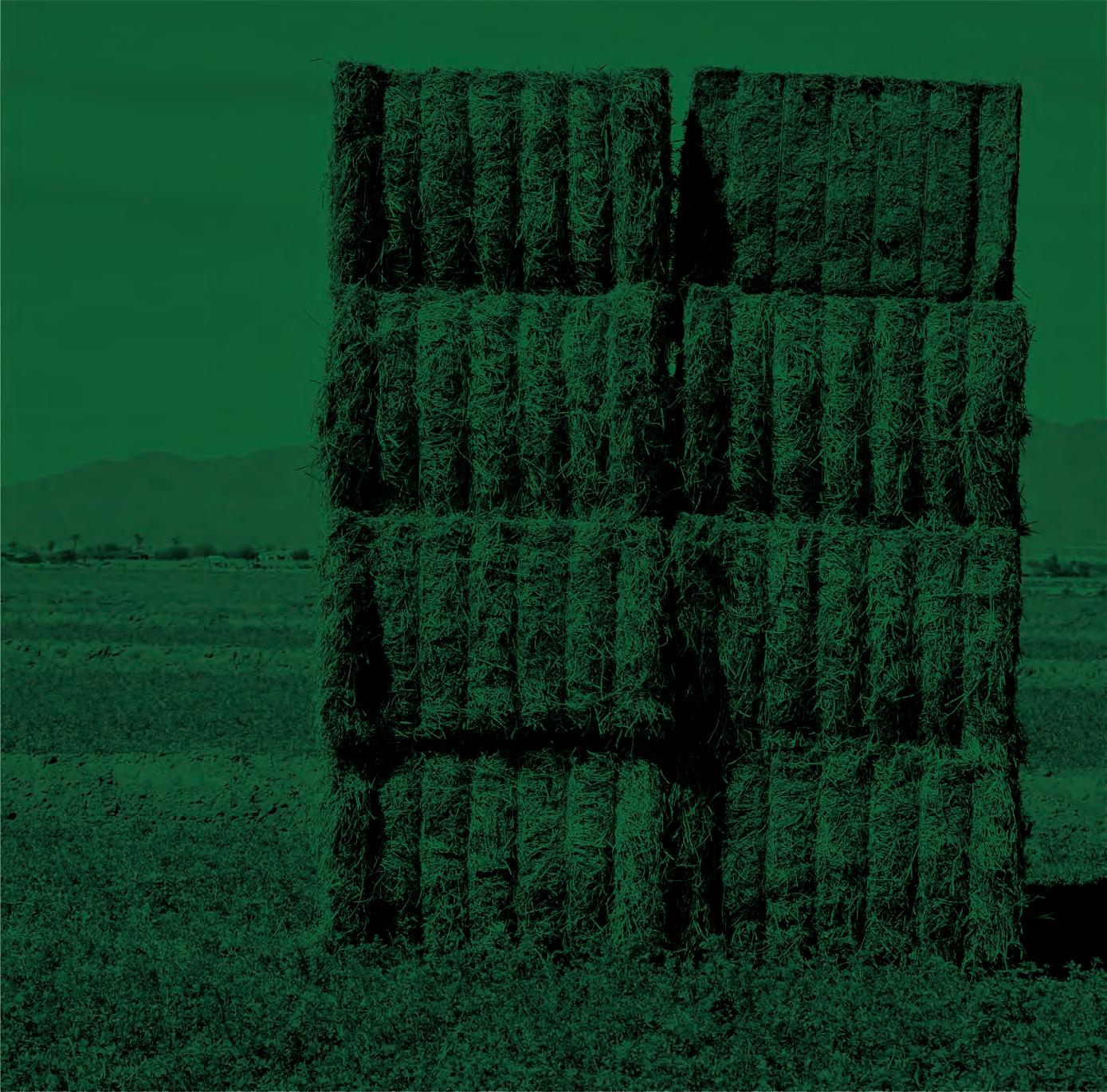
GET THE MOST OUT OF YOUR FIELDS WITH ALFALFA. JOIN THE R EG ENER ATION N ATION M OVEMENT TODAY. LEARN MORE A BOUT THE BENEFI TS OF ALFAL FA BY VISITING RE GENE RATION-N ATION.ORG OR TALKING TO YOUR LOCA L SEED REPR E SEN TATIVE
©2021 All rights reser ve d

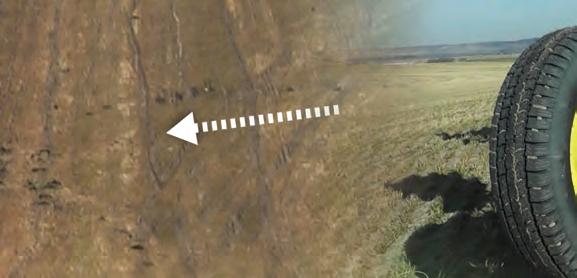

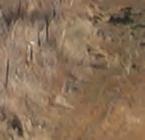


























































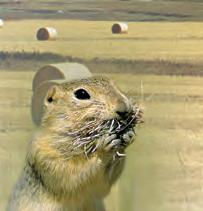





















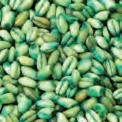

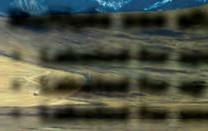














888-331-7900 • liphatech.com - Perimeter treatments intercept gophers before they enter the eld - Treat after cuttings; not just during dormant winter periods Earn $600 off per pallet with a Verminator LEARN MORE 3 X 3 PROGRAM DIAGRAM: - 3 rows 15-30 ft. apart - 3 times per year: - Oct-Nov. - March-April - June-Aug.
by Wayne Lynch Controls Pocket Gophers • Rangeland & fallow agricultural land • Border areas & buffer strips adjacent to crops • Fence rows, highways, rail & utility rights-of-way, ditches, canal banks & levees • Ornamental gardens, campgrounds and other recreational areas Control Richardson’s & Columbian Ground Squirrels in: Controls Ground Squirrels Ground Squirrel Bait RESTRICTED USE PESTICIDE Registered for sale in the states of ID, MT, NV, UT, WA & WY. 1 Must not be applied directly to food or feed crops. Do not broadcast bait on rangeland. On rangeland and for Columbian GS, make application only by spot baiting. 2 Do not exceed 10 lbs. of bait per acre, per application, or 20 lbs. per acre, per year.
use sites & application methods: • Labeled for spot and broadcast1 baiting • Labeled for up to 3 applications per year2 • Labeled for use in bait stations Effective Control Moisture Resistant Palatable 24c labeled for Wyoming GS in ID, NV & WY www.liphatech.com Harvest More Alfalfa
Photo
Multiple



















 by Mike Rankin
by Mike Rankin














 ADAM VERNER
ADAM VERNER





















































































































































 by Ed Rayburn
by Ed Rayburn

































































































































































